15 Best Weightlifting Belts in 2025
Reviewed by: Sergii Putsov (Head of Sport Science, 20 years of Oly Lifting experience, PhD Sport Science)
If you’ve been to public gyms or follow fitness content online, you’ve likely noticed weightlifters sporting large weightlifting belts across their midsection. But just what are these belts and do they actually work? Having tested dozens of options over the years, we’re ready to bring you the best weightlifting belt choices.
Beyond our comprehensive lifting belts review, we’ll provide insights into using belts to improve your exercise safety and performance. This knowledge will aid you in making informed purchase decisions and equip you with useful and interesting facts about weightlifting. This information can enhance your workouts and prepare you for potential future competitions.
In a hurry?
In a hurry and can’t keep reading? How about you check out the Warm Body Cold Mind Leather Weightlifting Belt.
The Warm Body Cold Mind leather belt, crafted by a former Olympic athlete with a deep understanding of elite competition needs, stands out as a top choice in weightlifting belts, boasting high-quality materials, timeless design, standardized sizing, and favorable reviews from fellow athletes.
For this article, our team, consisting of certified personal trainers and professional athletes, has evaluated 32 products based on eight key criteria. From this extensive review, we have narrowed it down to the top 10 products. We dedicated a total of 160 hours over several weeks to test most of these products, in addition to analyzing hundreds of online user reviews. Our list is continually updated, and we welcome your input and experiences in the comments section.
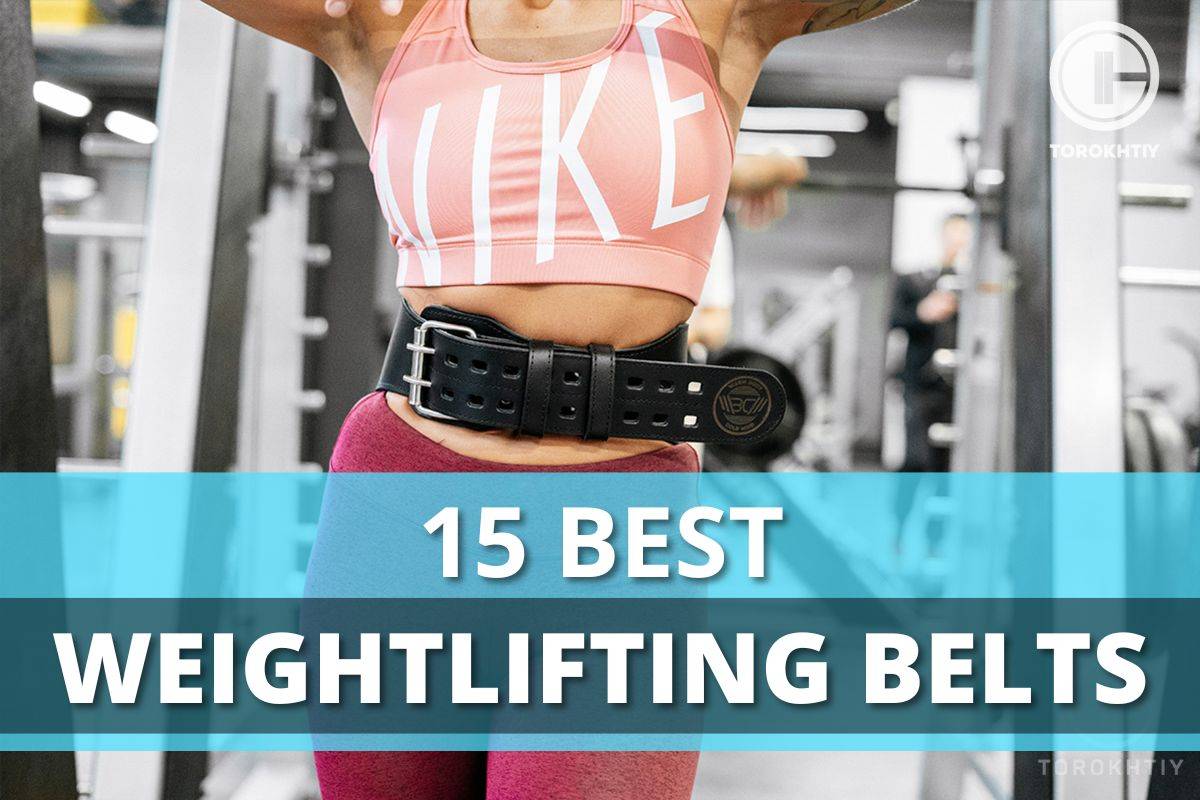
Top 15 Best Weightlifting Belts Reviewed
- Warm Body Cold Mind Leather Weightlifting Belt – Top Pick
- Rogue Ohio Lifting Belt – Runner-Up
- Rogue Oly Ohio Lifting Belt – Best For Olympic Lifts
- Iron Bull Strength Pro 13MM 4” Lever Belt – Best for Powerlifting
- Rogue Black Leather 13mm – 4” Lever Belt – Premium Pick
- Dark Iron Fitness Weight Lifting Belt for Men & Women – Best for Bodybuilding
- Gymreapers Quick Locking Weightlifting Belt – Best For Functional Fitness
- Flexz Fitness Lever Weight Lifting Leather Belt – Best Lever Belt
- Rogue USA Nylon Lifting Belt – Best 5″ Nylon Belt (Better Back Support)
- Rogue 5” Nylon Weightlifting Belt – Budget Pick
- Rogue 3” Ohio Belt – Best For Small Waist (Leather)
- 2POOD 3″ Petite White Marble Weightlifting Belt – Budget Pick
- All Smiles by Christine Kolenbrander 4” Weightlifting Belt – Most Creative Design (+ Customizable)
- Element 26 Hybrid Leather Weightlifting Belt – Leather + Nylon
- Evolution Support Belt – Best Neoprene
| Product | Total | Sizing | Materials | Durability | Support | Buckle | Versatility | Price/ Quality |
|---|---|---|---|---|---|---|---|---|
| WBCM | 69.5 | 10 | 10 | 10 | 9.5 | 10 | 9.5 | 10 |
| Rogue Ohio | 69 | 10 | 10 | 10 | 10 | 9.5 | 9.5 | 10 |
| Rogue Oly Ohio | 68.5 | 10 | 10 | 10 | 10 | 9.5 | 9 | 10 |
| Iron Bull | 68 | 10 | 10 | 10 | 10 | 10 | 9 | 9 |
| Rogue Black Leather | 67.5 | 9.5 | 10 | 10 | 10 | 10 | 8.5 | 9.5 |
| Dark Iron Fitness | 67 | 9 | 10 | 10 | 10 | 9 | 9 | 10 |
| Gymreapers | 66.5 | 10 | 9.5 | 9 | 9 | 9 | 10 | 10 |
| Flexz | 66 | 10 | 9.5 | 10 | 9.5 | 9.5 | 8.5 | 9 |
| Rogue USA (Nylon) | 65.5 | 10 | 9.5 | 9 | 9 | 9 | 9.5 | 9.5 |
| Rogue 5” Nylon | 65 | 9.5 | 9 | 8.5 | 9.5 | 9.5 | 9 | 10 |
| Rogue 3” Ohio | 64.5 | 9 | 10 | 9.5 | 9 | 10 | 8 | 9 |
| 2POOD | 64 | 9 | 9 | 8.5 | 9 | 9 | 9.5 | 10 |
| All Smiles | 63.5 | 9 | 9 | 8.5 | 9 | 9 | 9.5 | 9.5 |
| Element 26 | 63 | 9 | 9 | 8.5 | 9 | 9 | 9.5 | 9 |
| Evolution | 62.5 | 8 | 9 | 10 | 10 | 9 | 8 | 8.5 |
1. Warm Body Cold Mind Leather Weightlifting Belt – Top Pick
One of the best weightlifting belt spots goes to Warm Body Cold Mind leather belt. As a former Olympic athlete, I created this belt from firsthand experience in top-tier competitions, knowing exactly how people want it to fit and feel.
The materials are of high quality, the design is timeless, and it follows standardized sizing, so it will suit a variety of users from Olympic Lifters to Powerlifters. I’m also pleased to see it featured in many weightlifting belt reviews from our colleagues.
- Best for: Olympic Lifting, Weight training
- Closure Type: Double prong belt buckle
- Available Sizes: S, M, L, XL, 2XL, 3XL
- Waist Size Range: 28” (72 cm) up to 51” (131 cm)
- Width: 4 inches
- Thickness: 6 mm
- Material: Genuine Leather
- Certification: IPF & USAPL approved
The belt is made from A-grade genuine leather. It’s fastened by a double-prong stainless steel belt buckle attached to the leather with four strengthened bolts, on top of regular stitching. This build significantly enhances the belt’s durability and ability to withstand great exercise pressure without collapsing.
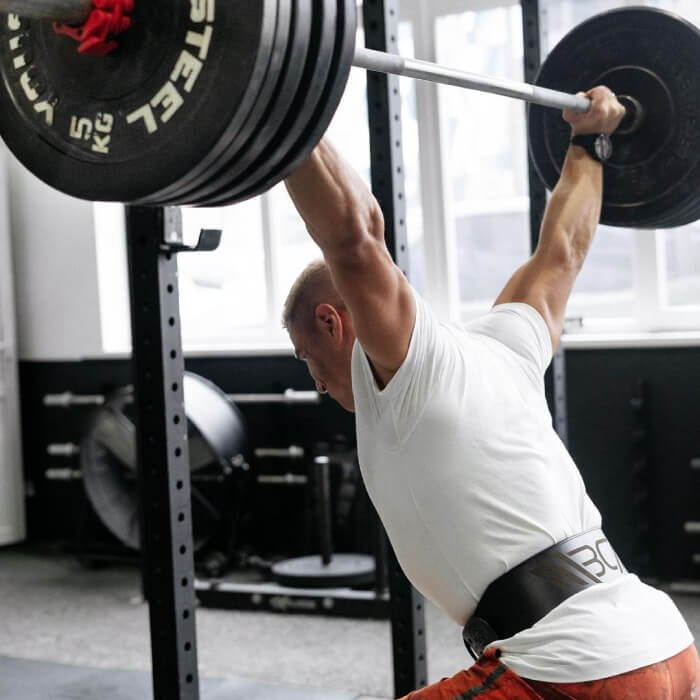
With a 4-inch width at the back, the belt offers dependable back assistance, while a slight taper at the front allows for increased mobility around the abs and diaphragm. The 6 mm of thickness provides a nice blend of comfort and support, catching your core when fully braced without digging into your body.
The overall design is subtle and practical, featuring laser printing on an all-black background. The belt is available in sizes going from S to XXXL with a high range of possible waist sizes, catering to both male and female athletes.
The Warm Body Cold Mind leather belt, designed by a former Olympic athlete, offers top-tier quality and durability with A-grade leather, a robust stainless steel buckle, and a thoughtful design for optimal support and mobility.
Positives:
Could be better:
2. Rogue Ohio Lifting Belt – Runner-Up
Our runner-up best lifting belt spot goes to the Rogue Ohio Belt. It’s fair to say Rogue Fitness requires no introduction unless you’re absolutely new to the world of weightlifting. The brand is highly valued and present at all levels of recreational and competitive training.
- Best for: Weight training
- Closure Type: Single prong belt buckle
- Available Sizes: S, M, L, XL, 2XL
- Waist Size Range: 21” (53 cm) up to 45” (131 cm)
- Width: 4 inches
- Thickness: 10mm
- Material: Vegetable Tanned USA leather
- Certification: None
The Rogue Ohio Lifting Belt, like the majority of their extensive product range, is proudly crafted in the U.S.A. Handmade from premium materials, it features Vegetable Tanned Genuine American Leather with a width of 4 inches and a thickness of 10mm, offering exceptional durability and robust support for vigorous lifts.
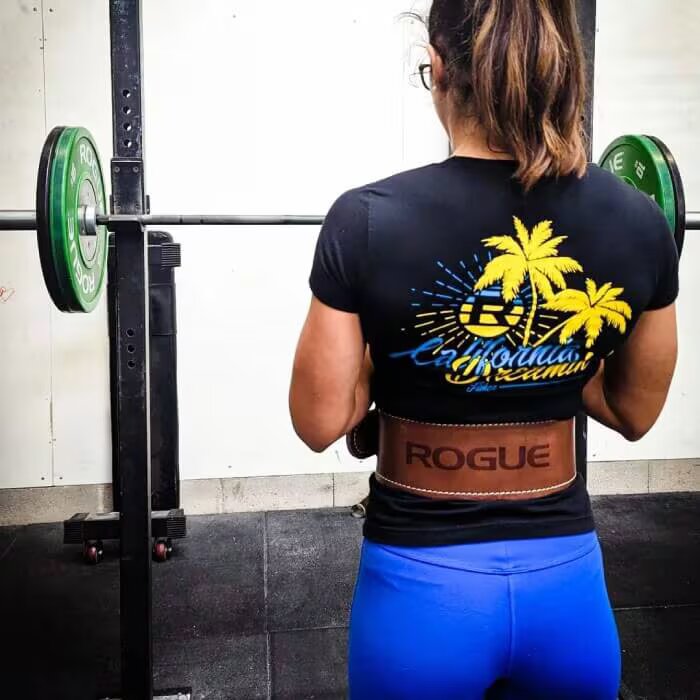
The belt boasts a distinctive design, opting for stylish brown leather instead of the conventional black. It showcases a shiny silver buckle, contrasting white stitching, and prominent Rogue logo branding etched on the loop and back, adding to its bold appeal. It's available in an inclusive range of sizes and circumferences, from S to XXL, making it a suitable lifting belt for men and women.
The Rogue Ohio Lifting Belt, proudly crafted in the U.S.A. by Rogue Fitness, features durable 10mm Vegetable Tanned Genuine American Leather in a stylish design with a silver buckle and is available in various sizes for both men and women.
Positives:
Could be better:
3. Rogue Oly Ohio Lifting Belt – Best for Olympic Lifts
Next up, we have the Rogue Oly Ohio Belt. As you could probably tell from the name, this is essentially the same product as the previously mentioned Rogue Ohio, except it’s specifically tailored towards Olympic lifts.
- Best for: Olympic lifting, weight training
- Closure Type: Single prong belt buckle
- Available Sizes: S, M, L, XL, 2XL
- Waist Size Range: 21” (53 cm) up to 45” (131 cm)
- Width: 4 inches back, 2 inches front
- Thickness: 10mm
- Material: Vegetable tanned USA leather
- Certification: None
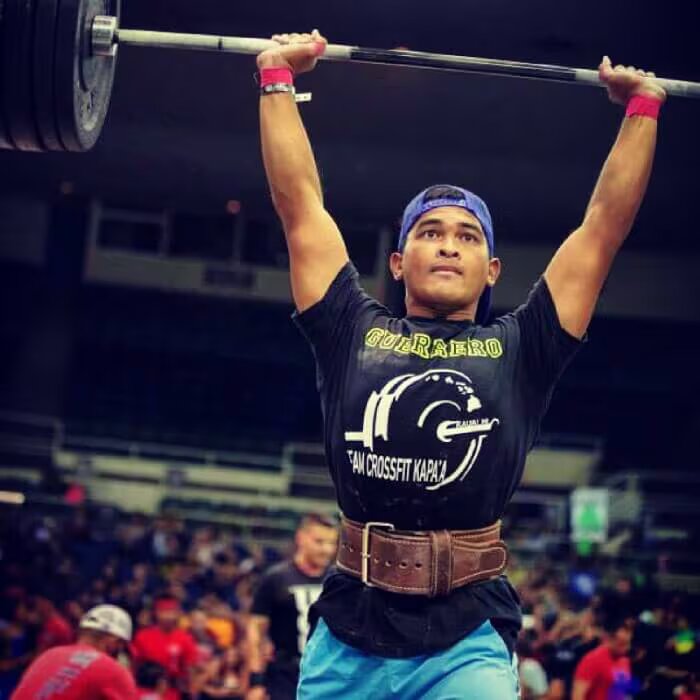
Just like the original, the Rogue Oly Ohio belt features the same 10mm thick, vegetable-tanned genuine American leather. Furthermore, it boasts the same durable stitching and expert craftsmanship. However, what sets it apart is this is specifically an Olympic weightlifting belt. This is characterized by a purpose-built tapering from 4 inches wide on the back, offering enhanced spine support, to 2 inches wide on the front and sides, ensuring increased mobility. The silver metal buckle remains consistent, but now, with the addition of a buckle guard, it prevents any snagging on your clothing or digging into your body — particularly valuable during the dynamic movements integral to Olympic lifts.
The Rogue Oly Ohio Lifting Belt, tailored for Olympic lifts, features thick vegetable-tanned American leather with a tapered design for enhanced mobility, a silver metal buckle, and a handy buckle guard to prevent snagging during dynamic movements.
Positives:
Could be better:
4. Iron Bull Strength Pro 13mm 4” Lever Belt – Best for Powerlifting
Our best Powerlifting belt choice goes to the Iron Bull Strength PRO. This is a fully-certified, competitively-viable belt made for pros and heavy lifters.
- Best for: Powerlifting
- Closure Type: Lever buckle
- Available Sizes: S, M, L, XL, XXL, XXXL
- Waist Size Range: 25” (63 cm) up to 50” (127 cm)
- Width: 4 inches
- Thickness: 13 mm
- Material: Genuine leather
- Certification: IPF, USAPL, USPA, and IPL
Crafted from premium A-Grade leather, the belt's substantial 4" width ensures robust support while its dually stitched construction bolsters its durability. What’s more, the contrasting red stitching gives it a stylish touch and draws attention.
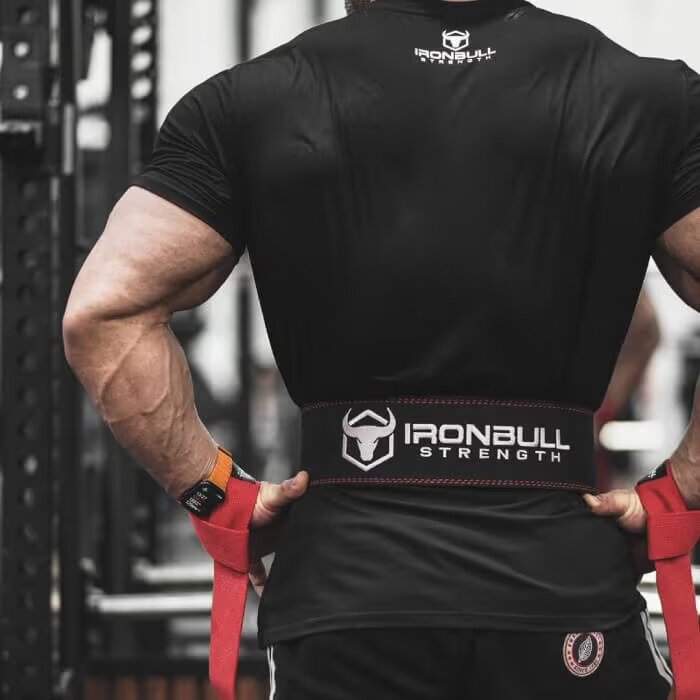
With a 13 mm thickness, this belt is designed to provide incredible back support, making it a perfect match for powerlifting enthusiasts. It’s fastened using a virtually unbreakable stainless steel lever, which allows for a snug fit and quick loosening, helping you ease muscle tension and re-catch your breath before jumping back into your set.
Most importantly, the Iron Bull Strength Pro belt is approved for use across various powerlifting federations, including prominent ones like IPF, USAPL, USPA, and IPL. This endorsement speaks to its quality and adherence to the highest levels of Powerlifting standards.
The Iron Bull Strength PRO Lever Belt is the preferred option for powerlifting, featuring A-Grade leather, a wide 4-inch design, substantial thickness for superior back support, and approval from prominent powerlifting federations.
Positives:
Could be better:
5. Rogue Black Leather 13mm - 4” Lever Belt – Premium Pick
For this list, our premium choice goes to the Rogue Black Leather 13mm/4” Lever Belt. For those not afraid to spend a little extra, you’ll get a top-quality product made by a renowned and trusted brand.
- Best for: Powerlifting
- Closure Type: Lever buckle
- Available Sizes: XS, S, M, L, XL
- Waist Size Range: 22” (56 cm) up to 48” (122 cm)
- Width: 4”
- Thickness: 13 mm
- Material: Genuine leather
- Certification: IPF

The belt is made in the U.S. using 100% Vegetable Tanned Sole Leather. This material not only lends a premium appearance and texture but also ensures long-lasting durability with minimal maintenance. Featuring an enhanced patented lock-in lever design, the belt offers a secure and easily adjustable fit. The lever is constructed from nickel-plated steel, boasting an elegant matte black finish. In terms of specifications, the belt maintains a standardized 4-inch width and 13-mm thickness, garnering full approval for usage by the IPF.
The Rogue Black Leather Belt, our premium pick, is crafted from 100% Vegetable Tanned Sole Leather in the U.S., featuring an innovative matte black nickel-plated steel lock-in lever and IPF approval.
Positives:
Could be better:
6. Dark Iron Fitness Weight Lifting Belt for Men & Women – Best for Bodybuilding
Dark Iron Fitness boasts an impressive line of products designed for serious lifters. They manufacture supportive accessories like wrist wraps, wrist straps, gloves, leather, nylon, Powerlifting, and bodybuilding belts, to name a few.
- Best for: All-purpose
- Closure Type: Double prong buckle
- Available Sizes: XS, S, M, L, XL
- Waist Size Range: 22” up to 49” (124 cm)
- Width: 4 inches
- Thickness: 4mm
- Material: Genuine cowhide leather
- Certification: USAPL
Constructed from 100% genuine cowhide, this belt boasts a standard 4-inch width and measures 4 millimeters in thickness. Remarkably, the material maintains surprising flexibility for a leather belt, ensuring a comfortable fit across various body types.
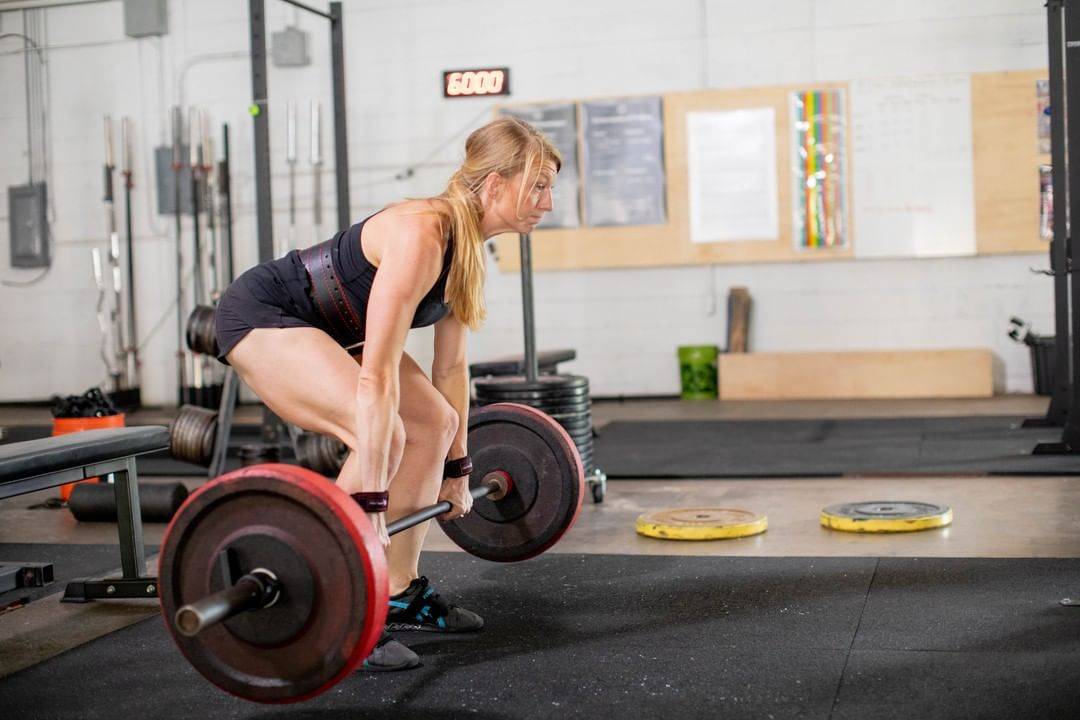
The belt showcases double stitching along its borders and incorporates two additional threads nearer to the center, complemented by vertical stitching from within. This comprehensive stitching pattern reinforces the leather's structure, rendering it exceptionally durable with an impressive maximum capacity of 600 lbs, particularly advantageous for bodybuilders and powerlifters alike. Crucially, it’s approved by the USAPL for competitive use as a competitively-viable powerlifting deadlift and squat belt.
The Dark Iron Fitness Belt, expertly constructed from flexible genuine cowhide and featuring a robust stitching pattern, provides durability and support but also boasts USAPL approval, making it a trusted choice.
Positives:
Could be better:
7. Gymreapers Quick Locking Weightlifting Belt – Best for Functional Fitness
Gymreapers is a serious player in the Weightlifting game. The brand is found across all levels of the sport, from recreational to competitive environments.
Their product designers know how to make a great belt that adheres to standards of shape and quality. Specifically, we wanted to highlight their nylon workout belt as your ideal choice for functional fitness and cross-training.
- Best for: Functional fitness, cross-training
- Closure Type: Hook & Loop Velcro
- Available Sizes: XS, S, M, L, XL, XXL
- Waist Size Range: 23” (58 cm) up to 49” (124 cm)
- Width: 4 inches
- Thickness: 1 inch
- Material: Nylon
- Certification: None
The belt is crafted from 100% Nylon, a material known for its enhanced breathability and low maintenance requirements. Its slim one-inch thickness promotes exceptional flexibility, setting it apart from traditional leather belts and offering a less restrictive experience. However, this flexibility does come at the cost of some durability.
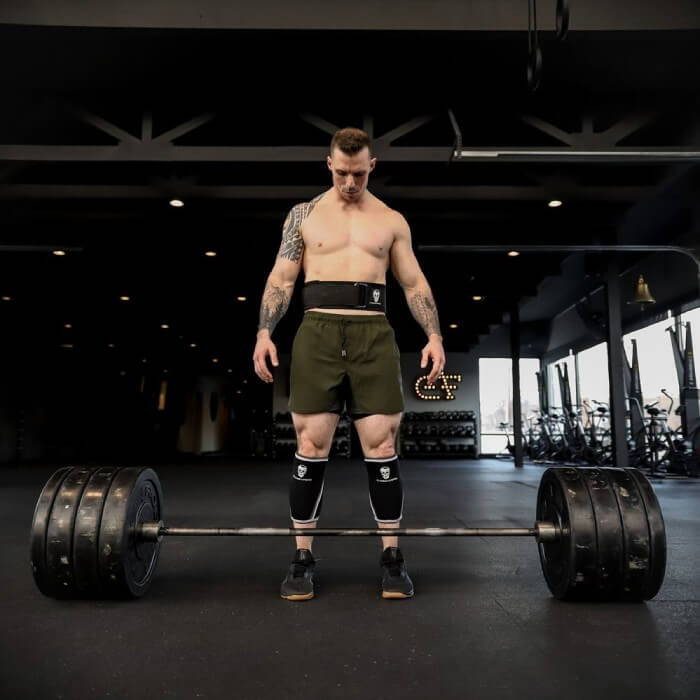
The quick-locking hook & loop system, featuring a robust metal roller and secured by a lengthy Velcro strip, provides a convenient fastening mechanism. This system's versatility allows you to easily adjust the belt on the go to achieve your desired fit.
The belt has a stylish appearance, with a choice of 11 distinct colors, including three popular camo patterns (wood, midnight, snow). Moreover, the option to attach additional purchasable patches offers further customization, catering to diverse personalities and preferences
The Gymreapers Belt, made from breathable 100% Nylon, offers easy adjustability through its quick-locking hook & loop system, and comes in a variety of stylish colors with customizable patch options.
Positives:
Could be better:
8. Flexz Fitness Lever Weight Lifting Leather Belt – Best Lever Belt
If you’re new to weightlifting, Flexz Fitness may be an unfamiliar name. Yet, they make some of the best lever belts currently available and adhere to the highest levels of technical standards.
- Best for: Powerlifting
- Closure Type: Lever buckle
- Available Sizes: XS, S, M, L, XL, XXL
- Waist Size Range: 24” (60 cm) up to 46” (116 cm)
- Width: 4”
- Thickness: 10 mm
- Material: Leather
- Certification: USPA, IPL
The highlight of this belt is the virtually indestructible steel fastening lever. It ensures a snug fit and allows for effortless adjustments with the quick-release mechanism. The contoured leather boasts a standardized 10 mm thickness and 4-inch width. Reinforced by triple stitching, the belt can withstand loads of up to 500 lbs with no issue.
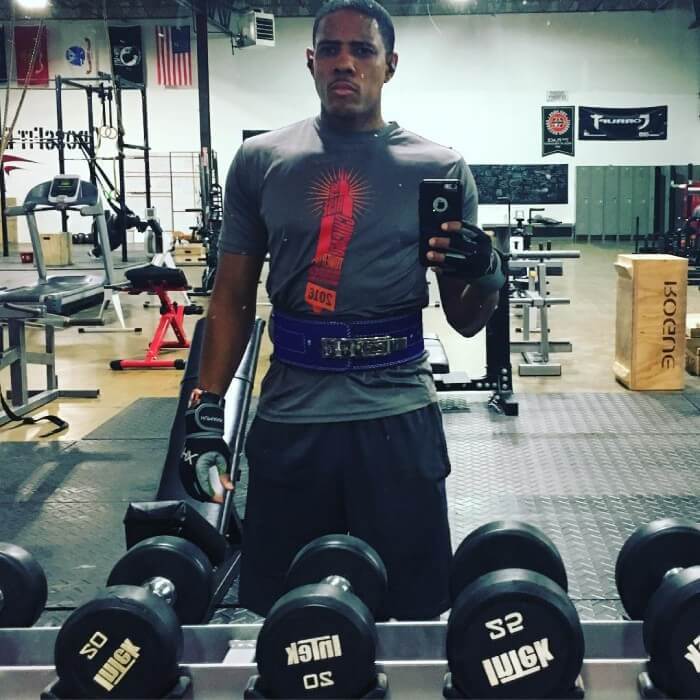
The belt is available in five versatile colors: black, red, pink, blue, and violet. Thanks to the suede finish and contrasting stitching, the belt not only performs but also looks stylish. Importantly, this belt meets the stringent standards set by the IPF and holds certifications from the United States Powerlifting Association (USPA) and the International Powerlifting League (IPL).
Flexz Fitness Lever Weight Lifting Leather Belt: Combining style with strength, this belt features a virtually indestructible steel fastening lever, reinforced contoured leather, and meets IPF, USPA, and IPL standards.
Positives:
Could be better:
9. Rogue USA Nylon Lifting Belt – Best 5” Nylon Belt (Better Back Support)
If you’re looking for something with a bit more flexibility but still providing ample back support, then the 5” Nylon Rogue USA belt is a good option. This belt was co-developed with a Rogue athlete Mat Fraser, who has personally used it in some of his title runs.
- Best for: Cross-training
- Closure Type: Hook & Loop Velcro
- Available Sizes: XS, S, M, L, XL, XXL, XXXL
- Waist Size Range: 26” (66 cm) up to 47” (120 cm)
- Width: 5” back, 4” front
- Thickness: 0.25 inches
- Material: Ripstop
- Certification: None
True to Rogue's tradition, this belt is fully designed and manufactured in the USA. This belt boasts an above-average size, featuring a generous 5-inch width at the back, offering substantial support to the spine. It then tapers down to 4 inches in the front, allowing for increased agility around the abs and obliques.
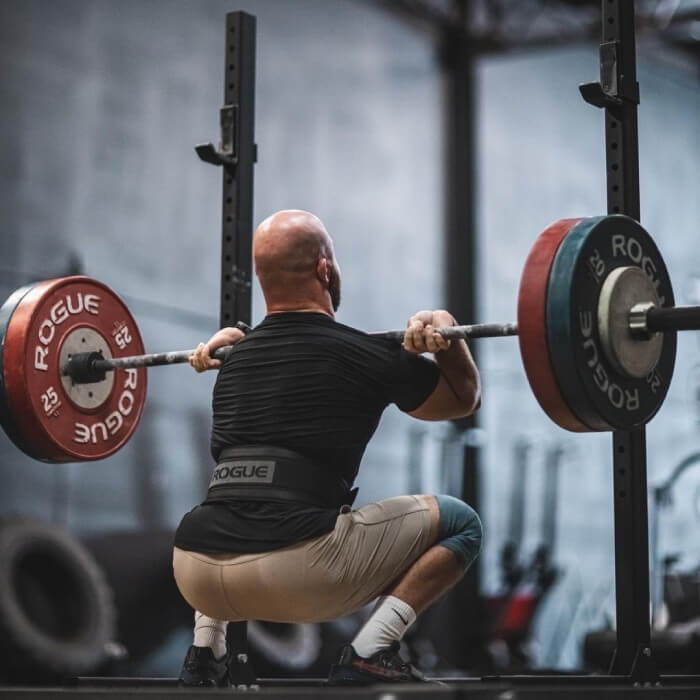
The main body of the belt is made of Ripstop, a nylon-based material intricately woven in a cross-stitch pattern for enhanced durability without compromising flexibility. This relatively new material has swiftly gained favor in use for outdoor, first responder, and tactical gear. The belt is fastened using a smooth-rolling hook & loop buckle secured by a wide Velcro strap.
Notably, this nylon belt comes with a unique touch – the capacity to attach Velcro patches on its surface for a personalized look. You have the option to select from the official range of 26 Rogue patches (purchased separately) or customize the belt with your own insignia, cause, or flag, allowing you to uniquely express yourself.
The Rogue USA Nylon Belt, developed with Mat Fraser, offers flexibility and vital back support with its unique taper design, constructed from durable Ripstop nylon, and allows for personalization with Velcro patches.
Positives:
Could be better:
10. Rogue 5” Nylon Weightlifting Belt – Budget Pick
If you want something that gets the job done but don’t want to overspend, our suggestion would be the Rogue 5” Nylon Weightlifting Belt. This is Rogue’s budget lifting belt alternative to the previously-mentioned Rogue USA Nylon belt.
- Best for: Functional fitness, recreational training
- Closure Type: Velcro
- Available Sizes: XS, S, M, L, XL, XXL
- Waist Size Range: 26” (66 cm) up to 46” (116 cm)
- Width: 5-inch back, 3-inch front
- Thickness: 1 inch
- Material: Nylon
- Certification: None
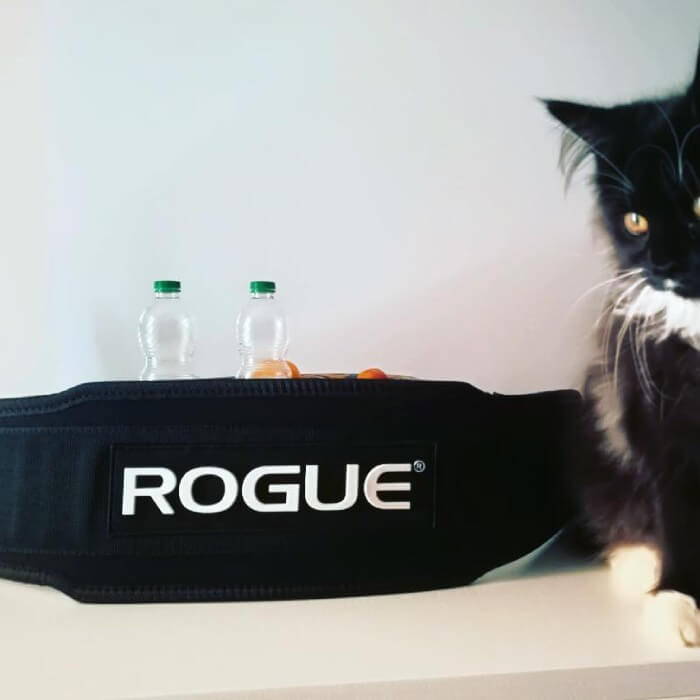
The specifications are nothing extraordinary but they check the essential tick boxes. The belt is made of Nylon, with an oversized 5” wide back tapering into a flexible 3” front. It’s secured using a steel hook & loop buckle fastened by an oversized Velcro strap. Currently only available in black, it does cover a decent size range making it a good lifting belt for men and women. It comes at a surprisingly low price considering the brand name, however, this does come at a slight decrease in quality. That said, if you don’t plan to push the belt to its absolute limits, this will be a well-worth purchase.
The Rogue 5" Nylon Belt presents a cost-effective solution for essential support, featuring a 5-inch back tapering to a flexible 3-inch front, secured using a steel hook & loop buckle, making it a good choice.
Positives:
Could be better:
11. Rogue 3” Ohio Belt – Best for Small Waist (Leather)
To avoid three-peats, the Rogue 3” Ohio Belt is just as the name suggests. The same product as the runner-up Rogue Ohio Lifting Belt, just in a smaller waist size.
- Best for: All-purpose
- Closure Type: Double prong belt buckle
- Available Sizes: S, M, L, XL XXL
- Waist Size Range: 21” (53 cm) up to 45” (114 cm)
- Width: 3 inches
- Thickness: 10 mm
- Material: Vegetable Tanned Leather
- Certification: IPF
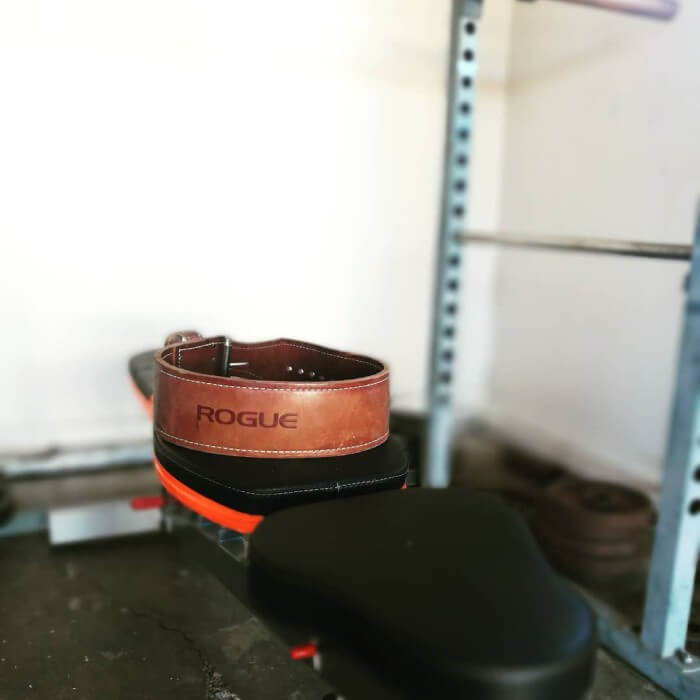
Compared to its 4” standard version, it’s worth noting that this belt hoists a few upgrades. Namely, it uses a double-prong belt buckle, whereas the original used a single prone. As expected, the same quality leather is used for this version as well. Additionally, while the main version does not have certification for competitive use, this belt is fully IPF approved, making it an excellent choice for female competitive Powerlifters.
The Rogue 3” Ohio Belt is a smaller waist-sized version of the runner-up Rogue Ohio Lifting Belt, offering upgrades like a double-prong belt buckle and IPF approval, making it an excellent choice.
Positives:
Could be better:
12. 2POOD 3” Petite White Marble Weightlifting Belt – Best for Small Waist (Nylon)
If you’re an athlete of smaller size but looking for a nylon belt specifically, then the 2Pood 3” belt may be the ideal choice.
- Best for: Cross-training
- Closure Type: Hook & Loop Velcro
- Available Sizes: XXXS, XXS, S, M
- Waist Size Range: 25.5” (64.8 cm) up to 38.5” (97.8 cm)
- Width: 3 inches
- Thickness: 1 inch
- Material: Nylon
- Certification: None
At first glance, the 2Pood belt appears to be a typical Nylon hook & loop belt with a Velcro strap. However, it distinguishes itself from cheaper hook & loop belts through its patented WODClamp™ fastening system. This innovative design incorporates a sliding plastic piece into the buckle, allowing for tighter securing after the belt is fastened. This feature not only reduces strain on the Velcro but also enhances the belt's durability during workouts.
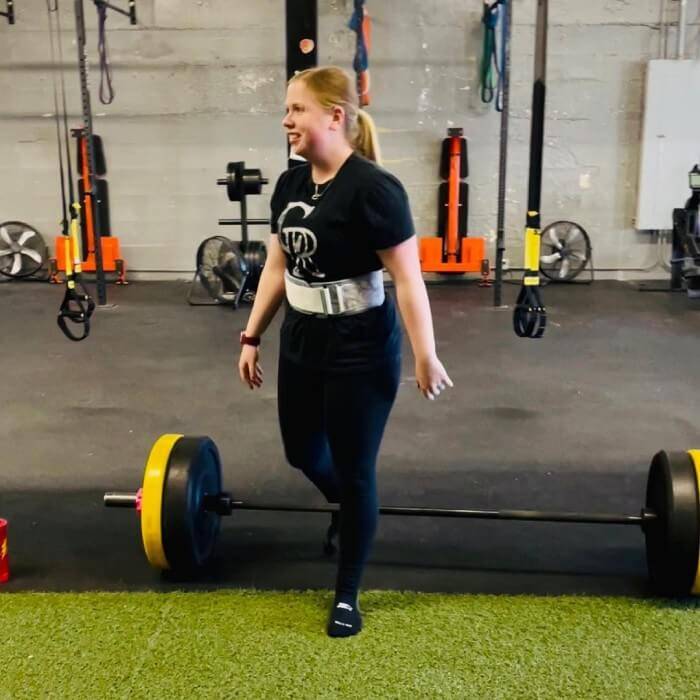
The belt is ideal for smaller athletes thanks to size going as small as 3XS. It also comes in a stylish white marble pattern, but there are options to customize as well.
The 2POOD Belt is an excellent choice for smaller athletes, featuring a patented WODClamp™ fastening system for enhanced durability, available in sizes as small as 3XS, and offering a stylish white marble pattern.
Positives:
Could be better:
13. All Smiles by Christine Kolenbrander 4” Weightlifting Belt – Most Creative Design (+ Customizable)
If you’re looking for something a bit more creative then the All Smiles 4” belt by Cross Training athlete Christine Kolenbrander is worth checking out.
- Best for: Cross-training
- Closure Type: Velcro with WODClamp™
- Available Sizes: XXXS, XXS, S, M, L, XL
- Waist Size Range: 25.5 “ (64.8 cm) up to 54.5” (138 cm)
- Width: 4 inches
- Thickness: 1 inch
- Material: Nylon
- Certification: None
As far as construction goes, this is a fairly typical 4” wide, 1” thick nylon belt. However, it has the unique feature of being fully customizable from scratch. It’s also available in a large size range, going from 25.5 up to 54.5 inches in waist circumference.
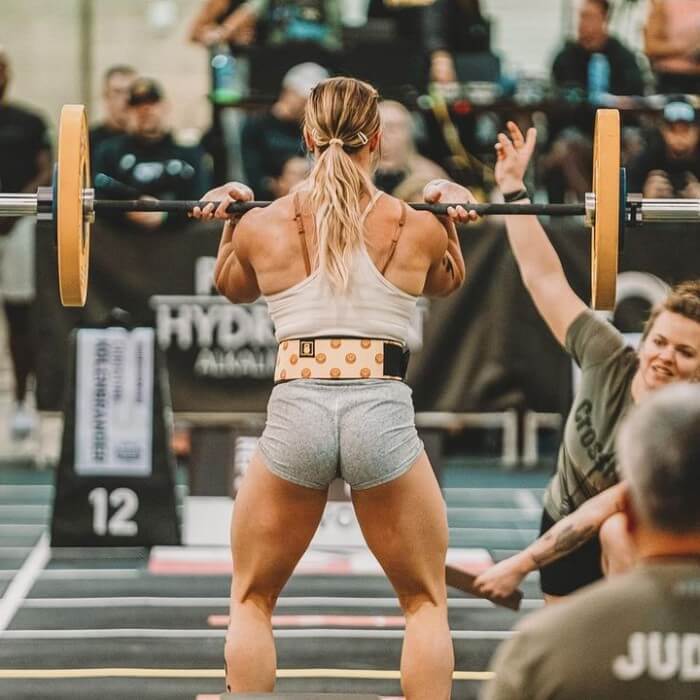
Apart from the smiley face pattern, the manufacturer allows for a variety of customizable designs for this belt, with a wide size range particularly oriented towards smaller athletes. However, if you don’t care too much about appearance customization you may find the price a little higher.
The All Smiles by Christine Kolenbrander Belt allows for creative customization, offering a standard 4-inch width and 1-inch thickness in nylon, with a broad size range, making it a great choice for smaller athletes.
Positives:
Could be better:
14. Element 26 Hybrid Leather Weightlifting Belt – Leather + Nylon
Next up, we have the Element 26 Hybrid Leather Weightlifting belt. This is a solid attempt at combining the rigidness of a leather belt with the adjustability of the nylon strap.
- Best for: All-purpose excluding very heavy lifts
- Closure Type: Hook & Loop Velcro
- Available Sizes: XS, S, M, L, XL
- Waist Size Range: 23” (58 cm) up to 45” (114 cm)
- Width: 4 inches
- Thickness: 6 inches
- Material: Leather and nylon
- Certification: None
The main body of the belt is made from durable 100% premium leather to make the belt strong and supportive even at heavy lifts. However, instead of using a classic prong belt buckle, Element 26 added your typical nylon and velcro hook & loop closure. This allows the belt to have basically infinite size adjustability while keeping the structural strength of classic leather.
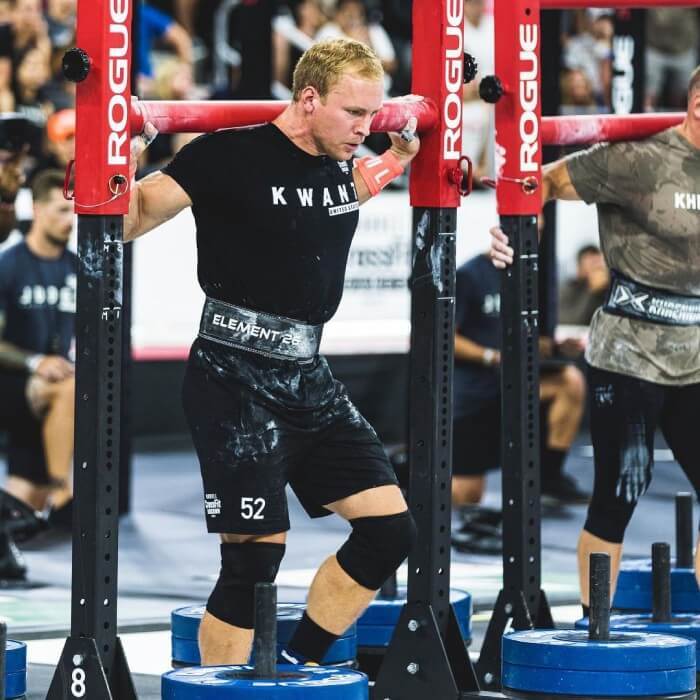
The self-locking buckle is easy to set up and won’t come undone during workouts, plus the quick-release lever helps you easily put it on and off. Every purchase is covered with a lifetime warranty.
The Element 26 Belt combines the strength of premium leather with nylon adjustability, featuring a self-locking buckle, quick-release lever, and the added benefit of a lifetime warranty, making it a reliable choice.
Positives:
Could be better:
15. Evolution Support Belt – Best Neoprene
Last but not least, we have the Evolution Support Belt. This belt was designed by 4x World’s Strongest Man champion, Brian Shaw. This makes it the ideal choice for larger-than-average athletes and particularly good for Strongman enthusiasts and pros.
- Best for: Strongman training, large athletes (6.5 ft+)
- Closure Type: Velcro
- Available Sizes: M, L, XL, XXL, XXXL, XXXXL
- Waist Size Range: 27” (69 cm) up to 55” (140 cm) & up
- Width: 9.5 inches
- Thickness: Not specified
- Material: Neoprene
- Certification: None
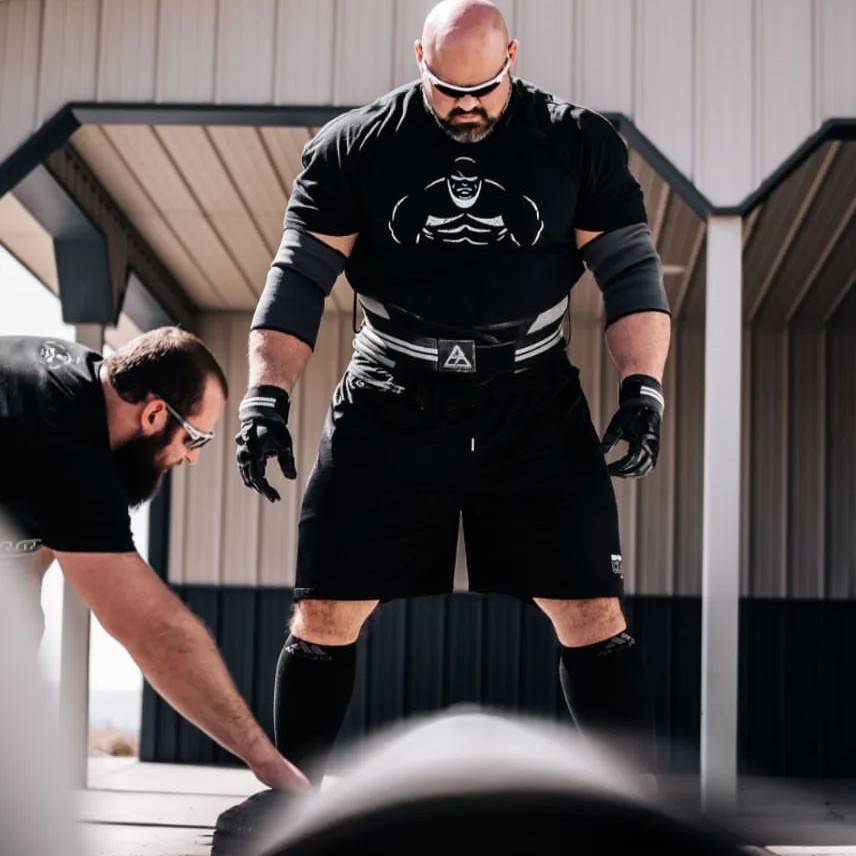
The primary construction of the belt utilizes Neoprene, a highly flexible synthetic rubber. Paired with its oversized design, it aptly conforms to the body contours of athletes substantially larger than average. The side straps offer three primary adjustment positions to cater to your support requirements: Unstretched - for basic support during warm-ups and light weights, Stretched - for most training weights, and Fully Stretched - for maximum weights. A special feature of the Evolution belt is its ability to be combined with a standard 4” belt using the sewn-in belt loops to hold it in place in case you need additional support.
The Evolution Support Belt, designed by 4x World’s Strongest Man champion Brian Shaw, is ideal for larger athletes, offering Neoprene construction and the option to combine it with a standard 4” belt.
Positives:
Could be better:
Experts Who Contributed To This Article
M.Sc.Eng. Biotechnology, Sports Nutritionist

What Is a Weightlifting Belt?
A weightlifting belt is exactly as it sounds: a specialized workout belt meant to be worn during strength training, particularly during popular weightlifting exercises like the squat, deadlift, overhead press, and similar. It’s a simple but effective accessory that can aid your lifts in many ways, including increased performance and reduced risk of injury, to name a few. When worn correctly and tightened properly, the weightlifting belt helps increase intra-abdominal pressure. This provides vital vertical stability to your spine, stabilizing it during heavy lifts.
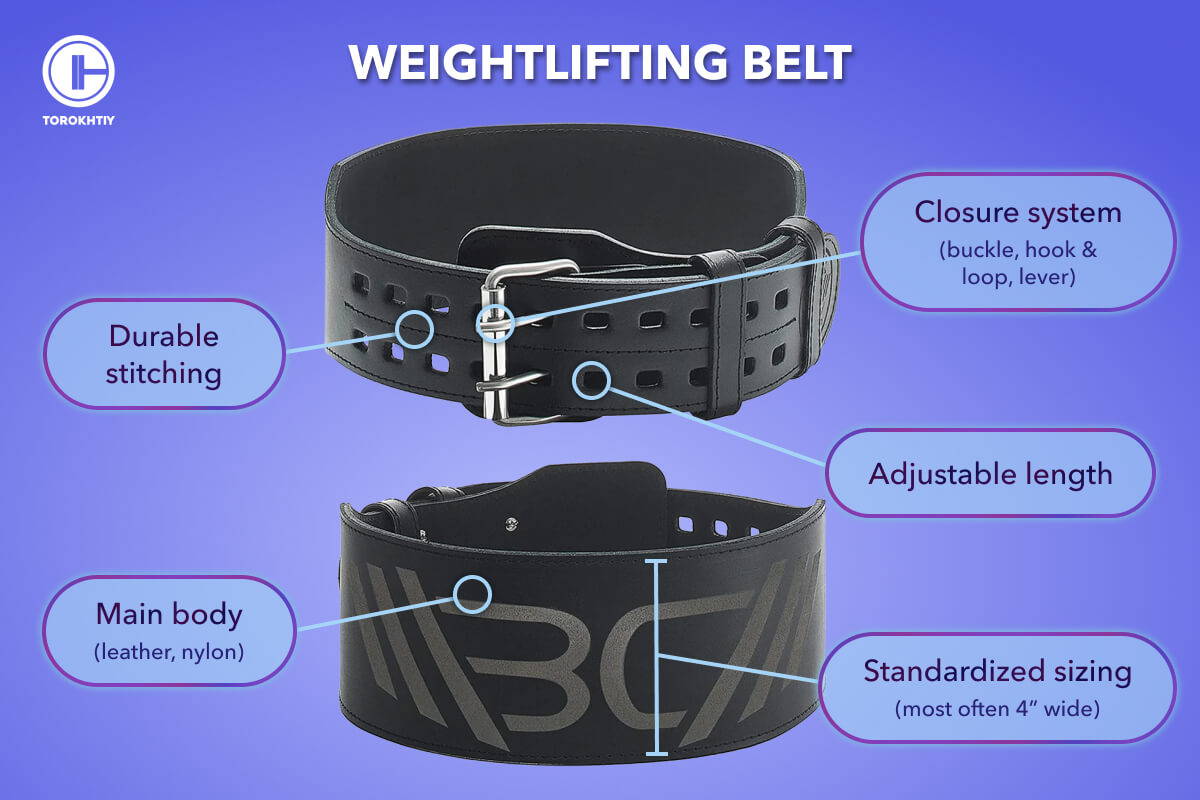
Benefits Of Weightlifting Belts
There’s been a lot of talk about the benefits of using the workout belt both recreationally and competitively. So, what are these benefits? Let’s what we’ve learned from experience and science:
✅ Stabilizes Your Core
The main purpose of using a weightlifting belt when exercising is to provide stability to your core. But what exactly is our core? Most people when they hear the word immediately think of the abdominal muscles (abs). Although abs are part of our core structure, they’re not the only element.
Our core consists of multiple muscle groups surrounding our hips and spine in a full 360 degrees, but a basic categorization usually goes: spinal muscles, pelvic muscles, abdominals, and diaphragm. When we attempt to lift a heavy object, particularly when picking it up (thus bending in our core), these muscles activate to help stabilize our spine and hips.
Wearing a weightlifting belt helps us increase intra-abdominal pressure (IAP) by acting as a “wall” that prevents excessive movement and flexion in our core muscles. This increase in pressure helps keep the forces of the lift concentrated and keeps the spine and pelvis aligned. In the simplest of terms, wearing a weight training belt holds your core together in place.

✅ Improves Your Lifting Performance
Let’s get one thing straight — putting on a weightlifting belt won’t suddenly increase your raw strength. That is to say, you won’t be able to magically lift 45 lbs/20kg more than you usually do simply by wearing it. However, wearing a weightlifting belt can improve your lifting performance in many ways, some of which can indirectly cause you to lift higher weights as well. Adding to this, wearing a belt is a subtle but helpful reminder of the importance of proper technique, including our posture, breathing, and stance, to name a few.
For example, a study examining athletes performing a standard squat with and without the belt showed that intra-abdominal pressure increased by up to 40% when wearing it. Furthermore, this effect was greatest when performing 90% of the athlete’s typical 1-rep maximum. Another study observing multiple repetitions of the squat recorded similar results — a 25-40% increase in IAP. Furthermore, the same study observed that subjects were able to perform the exercise faster when wearing a belt, even in the later repetitions, suggesting a lowered loss of strength and endurance. These findings suggest a weightlifting belt is especially beneficial when performing your highest repetition maximum or going for extended sets.
More research on the topic showed that athletes completed their sets quicker when wearing VS not wearing a belt, with a noticeable increase in barbell travel velocity both vertically and horizontally. This undoubtedly confirms lifters had an increase in explosive power in their legs, which is important for many compound lifts, including Squats, Deadlifts, and Olympic lifts, to name a few.
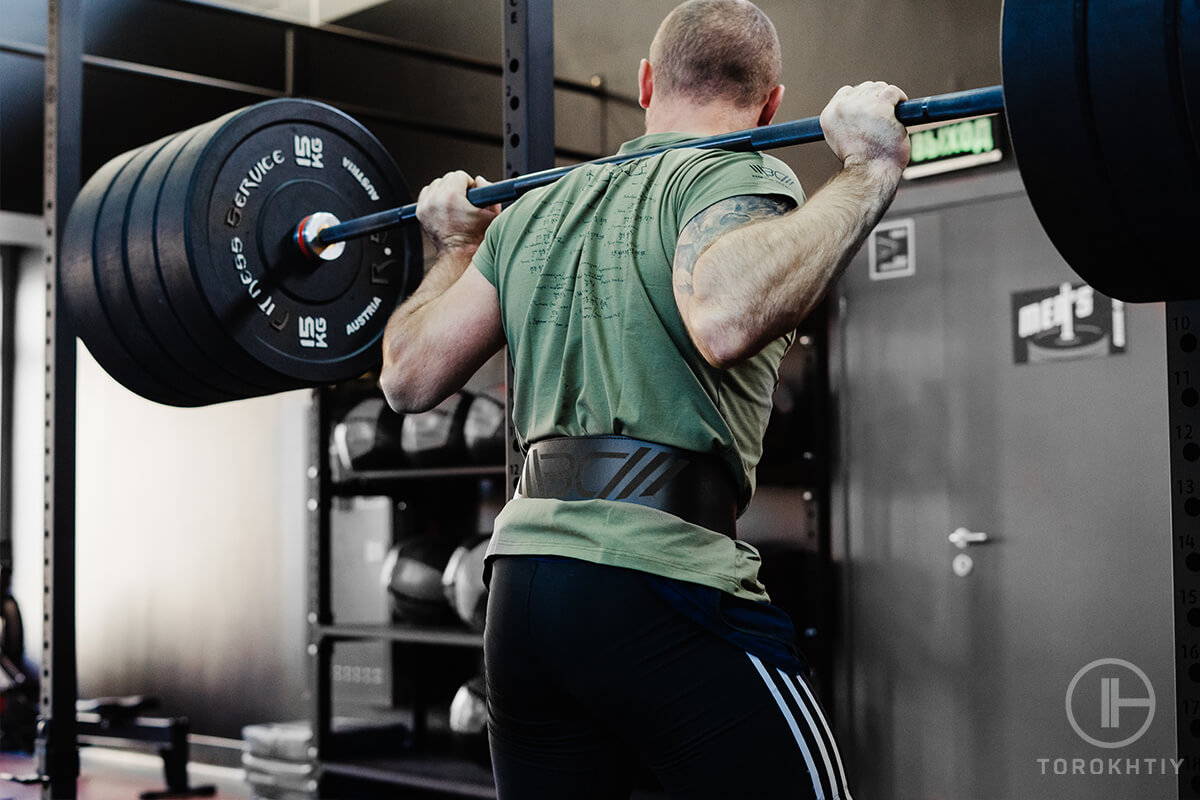
✅ Reduces Risk of Injury
It’s no secret that exercises bearing heavy weight can lead to injury. During the increasingly-popular Powerlifting exercises — the Squat, Deadlift, and Bench Press — the most common injury locations observed are the lumbar spine (lower back), pelvic region, shoulders, hips, and knees. We’ve already touched upon how a weightlifting belt increases our intra-abdominal pressure and how that increase in IAP reduces potentially harmful comprehensive forces on the spinal discs.
Furthermore, the bulk of injuries happen when a lifter experiences a load they aren’t able to carry or during a sudden shift in weight distribution (like when losing balance). Logically, this most commonly occurs when attempting our maximum lift or when going for a new record and failing to execute. Studies looking at sudden changes in load capacity as well as kinematic reaction to asymmetric (uneven) loads have observed lower erector spinae activity and a faster response time in our torso when wearing a lifting belt. Although these changes are small, they can prove vital when, for example, going for max reps or adding an extra 10 lb/5kg to your barbell.
As you can see, the best gym belts reduce the risk of injury and thus improve lifting safety. Of course, it’s important to mention this effect only takes place if the belt is worn properly and the lifter utilizes proper breathing and exercise techniques (more on this topic in an upcoming section).
✅ Gives You a Mental Edge
Both experienced lifters and coaches agree that a weightlifting belt can give you a mental edge when lifting, especially when going for max or near-max sets. Especially for beginners, once you learn the above-mentioned benefits of wearing a workout belt, it can make you feel safer and more confident in your lift, allowing you to pursue higher goals.
But this isn’t just gym talk, there’s also data to back it up. The study in question looked at the effects of using weightlifting belts and wrist straps when performing Deadlifts. On the surface, the subjects were observed performing the exercise faster when wearing supportive equipment, suggesting an increase in confidence. More importantly, athletes self-reported a lower Rate of Perceived Exertion (RPE) when using a belt VS not using it (subjects felt the exercise was easier with than without a belt).

When Do You Need a Weightlifting Belt?
A common topic of debate among lifters is whether or not you should use a weightlifting belt and if so, what’s the appropriate time to wear them. Some lifters argue against the usage of belts, stating that lifting without one is the purest form of exercise and best for strengthening your core strength and lifting stability naturally. Furthermore, they emphasize that relying on the belt creates psychological dependency, where lifters feel as if they can’t perform without one, which can end up being a self-fulfilling prophecy of sorts.
According to research, about 27% of recreational weight trainers use a belt. Most argue that the benefits of wearing one outweigh the downsides. Among the many benefits, they mention belts are safe to wear, effective at what they’re meant for, and approved in competitive settings as well. So, who is correct? We’ve already covered a large portion of exercise and belt science in our previous sections. To recall, a weightlifting belt provides added stability and support to the spine and core, which can reduce the risk of injury and enhance performance.

It can be beneficial to wear one when attempting compound lifts, like Squats and Deadlifts, and proves especially useful during maximum capacity sets and deeper in your session. If you’re lifting near your max weight, going for personal records, or dealing with a previous injury in your core area, wearing one can help you maintain proper exercise form and manage fatigue. However, when doing warm-up sets or intentionally training well within your weight capacity (for example, below 75% of your maximum), a weightlifting belt may be unnecessary.
Expert on the topic, Jacek Szymanowski, says:
"Don’t use a belt when lifting less than 75% of your 1RM and learn how to brace properly — your diaphragm should be your belt until above 75%."
Moreover, a weightlifting belt is not capable of correcting lifting mistakes. Belts can enhance the lift but aren’t able to carry the weight for you. It’s important for beginner lifters to focus on learning exercise techniques first before putting on a belt and going for heavy loads. This means starting with lower weight increments and focusing on developing core strength and muscle memory. Attempting lifts beyond your exercise capacity is a common cause of injury, but it’s actually secondary to improper technique.
Jacek Szymanowski added:
"Wearing a belt too often and when not needed will make your back weaker."
Furthermore, not all exercises benefit from a training belt. Popular exercises such as planks or knee raises engage our core, so it may seem beneficial on the surface to use a belt in them too. However, these exercises benefit from a freed up core, meaning a belt can hinder your performance and even increase the likelihood of injury.
Jacek Szymanowski says interesting fact:
"The best core exercises are the squat, deadlift and overhead press."
Typically, a belt should be reserved for classic weightlifting exercises and their variations, here’s a table breakdown of how that looks like:
| Better With Belt | Better Without Belt |
|---|---|
| Deadlift | Core exercises (planks, knee raises, deadbugs) |
| Squat | Isolated machine exercises (biceps curl, triceps press, rowing machine) |
| Olympic Lifts (Clean & Jerk and Snatch) | Plyometric exercises (box jumps, burpees, ball throwing) |
| Farmer’s Walks | Mobility exercises (stretching, yoga) |
| Overhead Press | Balance & Coordination exercises (Pistol Squats, Turkish get-ups, walking Lunges) |
| Bench Press with higher weight increments | Warm-up sets (lifting with lower weight increments) |
Types of Weightlifting Belts
Although generally standardized, belts still come in a variety of shapes and sizes and not every belt is made for the same purpose. Here are some ways to easily differentiate between weightlifting belts:
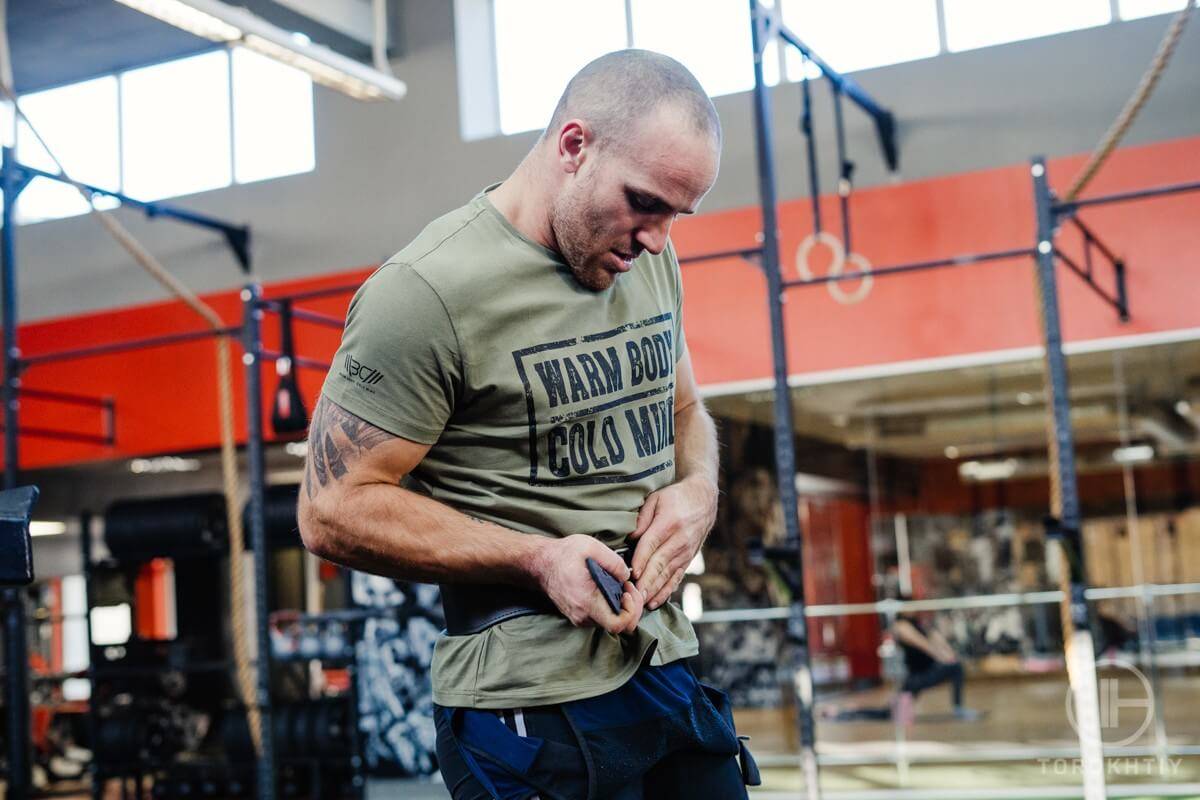
1. By Fastening Mechanisms
There are a couple of different fastening mechanisms found on weightlifting belts depending on their purpose, combined material, and pricing. Here are the most common examples:
• Belt Buckle
The first is the classic metal belt buckle and hole system. It’s most commonly found on leather weightlifting belts and can have one or two prongs. Higher-quality belts typically have the double prong that can withstand greater capacity. However, this type of closure system is less adjustable since it relies on the placement of the holes. That’s to say, if your ideal fit would be somewhere between two holes, you’re out of luck and have to make a choice to either go tighter or looser.
• Velcro With Hook & Loop
On the other hand, we have belts with a hook & loop closure system. Once the belt is fastened, it’s then secured by the large Velcro strap. You may hear some people at the gym refer to them as Velcro belts for this reason. This system is common on belts made from fabric such as nylon. It’s highly flexible and easily adjustable, allowing the belt to fit basically any body shape. However, the hook & loop system is not as durable as the classic metal belt buckle.
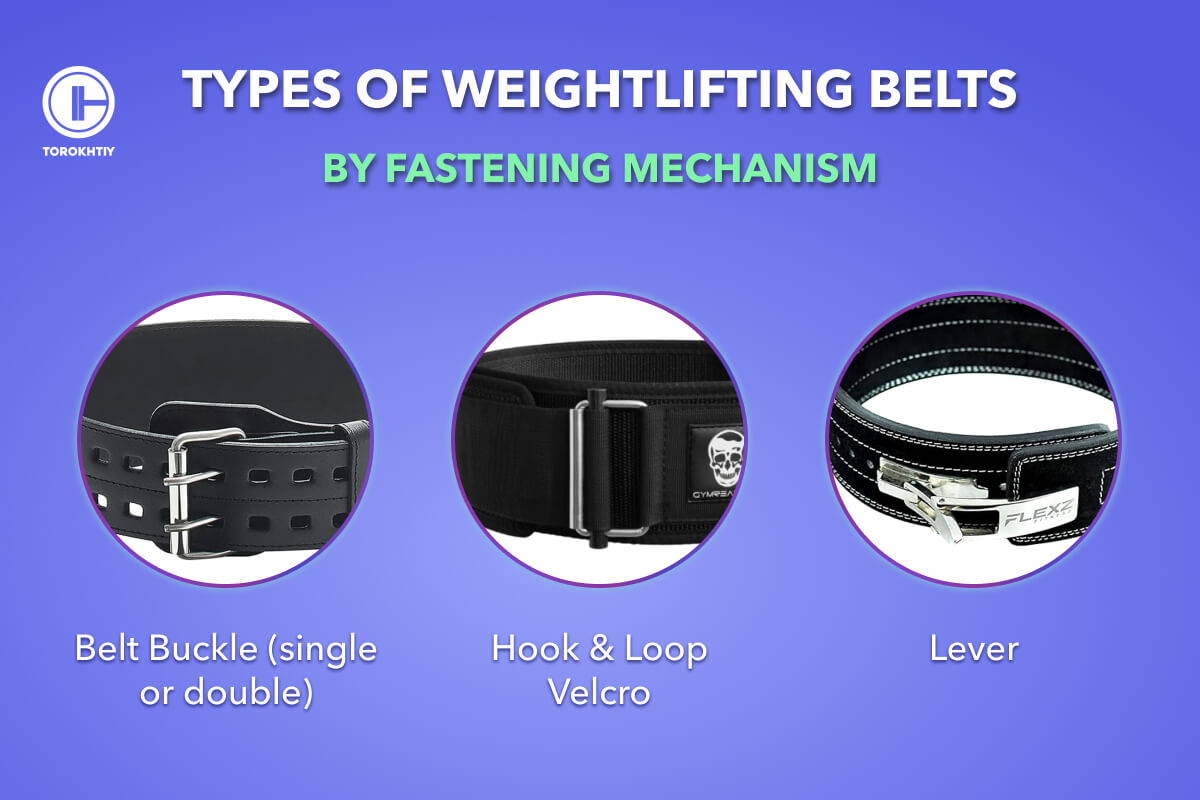
• Lever
Somewhere in the middle of both, we have lever lifting belts. These belts try to combine the best of both worlds between the classic belt buckle and hook & loop, but they can also carry the cons of both. For starters, a lever lifting belt has to be fit before use, since the fastening clasp needs to be screwed in. This means that there is practically no option to adjust the fit on the go — you have to disassemble and reassemble it. On the other hand, when the fit is right, this belt can be more comfortable to wear than a classic belt buckle and is infinitely more durable than the hook & loop. That said, this type of closure is mostly found on premium-priced belts.
2. By Material
The majority of weightlifting belts on the market will come in either leather or nylon as their main construction material. Both have their pros and cons and your choice will mostly come down to preference, but there are some points of consideration for each.
• Leather Belts
A leather weightlifting belt is more durable and robust. On average, it can withstand higher exercise pressure and take on a greater amount of wear and tear before needing replacement. Typically, it’s more expensive upfront but can have a great return on investment for people looking to lift heavier. This makes it an especially preferred choice for powerlifters and competitive lifters. However, leather weightlifting belts are also stiffer and can feel restrictive to wear until broken into. Furthermore, a genuine leather belt requires more after-care to keep the material up in shape and appearance.
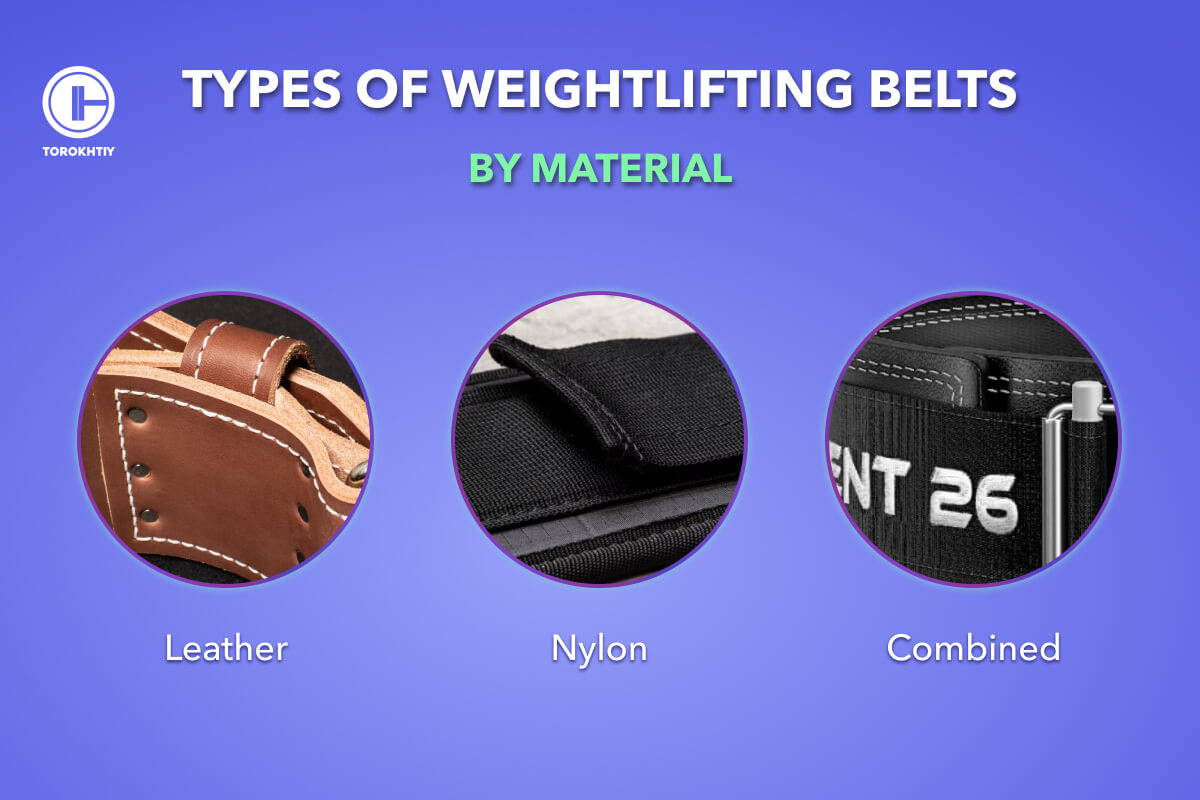
• Nylon Belts
Nylon weightlifting belts tend to be the opposite. They’re less durable and break more frequently, which is why they’re not common in heavy lifting. That said, nylon is more flexible and will sit comfortably on the majority of body types upfront plus the typical velcro secure system found on one can be readjusted quickly and easily. This makes it perfect for more dynamic workouts such as cross-training or functional fitness, where you need a less restrictive belt and put it on and off frequently. It’s also typically more affordable, making it a decent budget lifting belt choice for beginner and recreational lifters.
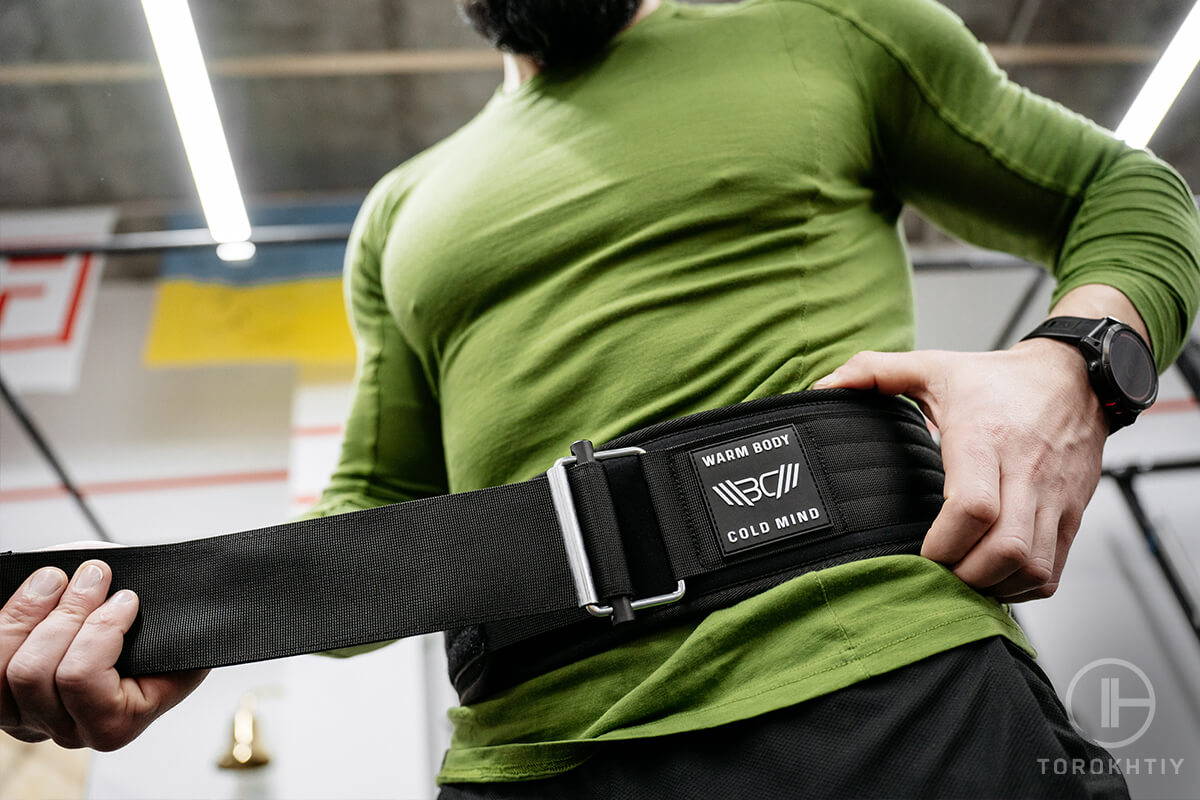
3. By Purpose of Use
Just like any piece of exercise equipment, there are some standards set for weightlifting belts. Of course, no one is going around inspecting people at the gym and asking what type of belt they’re using. If you’re a recreational lifter and you find one that works for you, by all means, keep using it. However, if you plan to enter any form of competition or simply want to train like the pros (which is always a good idea), you might want to know the different types of belts.
Jacek Szymanowski considers:
"I usually use leather belts but the nylon one is great for some easier lifting (less weight but more lifts). I personally like belts that have the same width across (don’t narrow in the front). Otherwise I don’t feel enough “pressure”."
• Powerlifting Belts
Powerlifting belts arguably undergo the most rigorous inspections. According to the latest International Powerlifting Federation (IPF) rulebook, a belt: can not be wider than 10 cm, thicker than 13mm along the main length, the inside width of the buckle can't be more than 11 cm, the outside width no more than 13 cm, the tongue loop not wider than 5 cm, and the distance between the end of the belt and far end of the tongue loop mustn't be more than 25 cm. If you aren’t confused already, note that these are just the rules for belt sizing. There are additional rules on materials, color, approved manufacturers, and more.
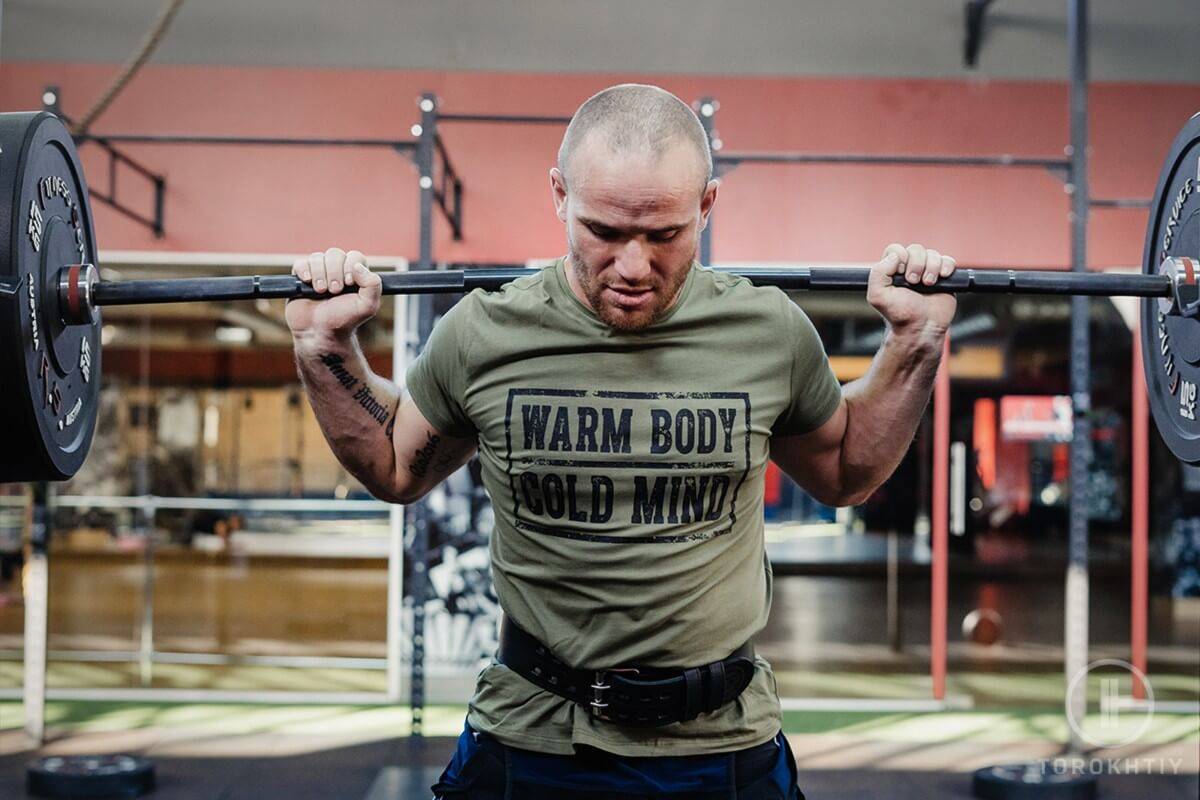
• Olympic Weightlifting Belts
Next, we have the Olympic weightlifting belt. This belt type is typically wide on the back portion to provide ample back support but tapers down in the front. This design is meant to avoid the belt coming in contact with and intercepting the barbell, which travels closely to the body during the two Olympic lifts — the Snatch and Clean & Jerk. Olympic weightlifting belts also adhere to the IWF standards, which only have one rule: the belt can be no more than 12 cm wide (or around 4.72 inches). Everything else — the material, closure type, shape, etc. — is very much preferential.
• Cross-training Belts
In cross-training disciplines and competitions where athletes quickly switch between exercises or weight increments, a belt that’s more comfortable and easily adjustable can prove more efficient. For this reason, many cross-trainers opt for a nylon belt with hook & loop closure or a thinner leather belt with a quick-release lever. Major cross-training competitions do not have set rules on the type and size of belt, so athletes tend to go by preference.
• Regular Gym Training With Weights (Bodybuilding)
Bodybuilders typically look for belts with a high weight capacity due to their training regiments, which includes both lots of repetitions and heavy weights for rapid muscle growth.
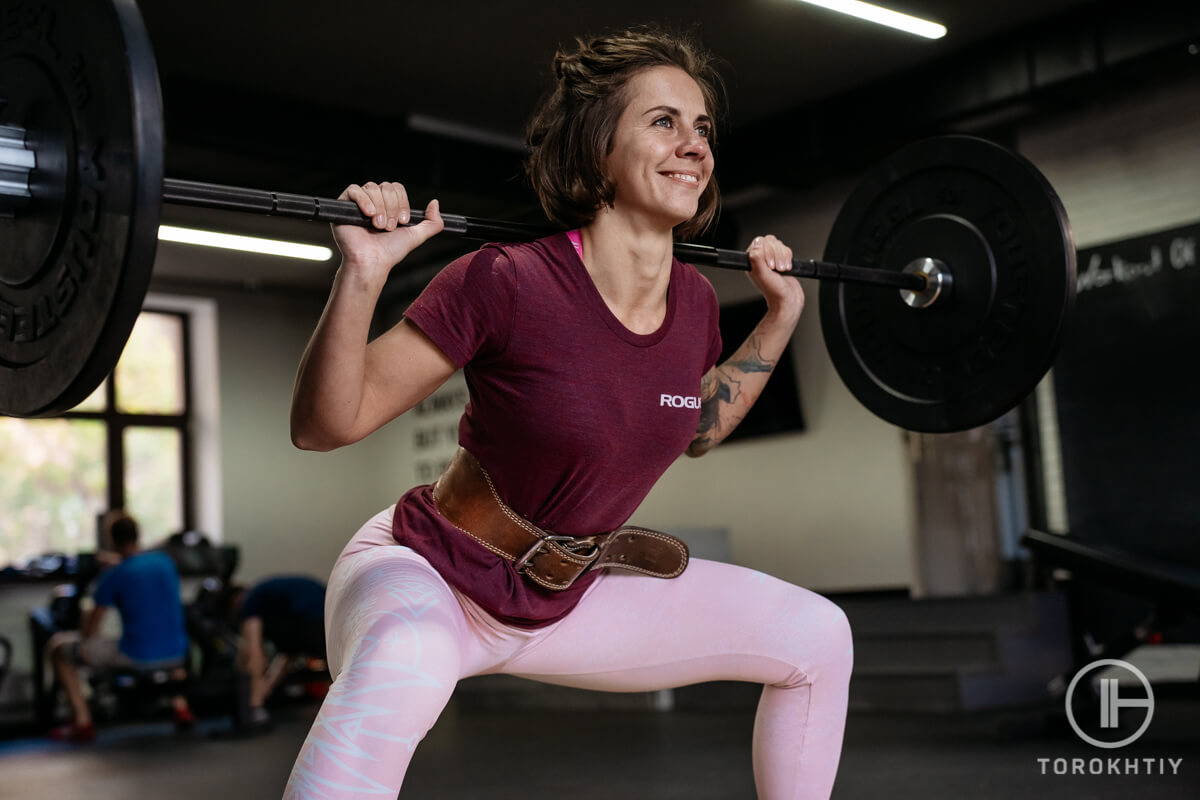
• Specialized Belts
Strongman belts are easily recognizable by their sizing that goes into 3XL and above to fit the typical Strongman athlete. They also have noticeably thicker padding to add more comfort to unconventional and vigorous Strongman exercises, such as carrying or pulling large objects.
How to Pick the Best Weightlifting Belt for You?
We’ve already shown you our best weightlifting belt picks and explained the pros and cons of each. If you’re unsure which belt is right for you, here are the factors you should consider:
1. Sizing
The ideal training belt will fit you so that you can adjust it tightly with no issues. Luckily, belt manufacturers often have an array of sizes, typically going from Small (S) to Extra Large, but going even higher or lower. The best way to pick your size is by measuring your waist at the midsection then referring to the manufacturer sizing chart.

2. Thickness and Width
When choosing the belt thickness and width, consider the types of lifts you want to perform and the intensity of the exercise you’re going for. Belts that are wider and thicker tend to provide higher levels of support, which can be beneficial when doing Powerlifting or Olympic lifts. However, a thicker and wider belt can also be less comfortable and simply unnecessary for recreational lifting when approaching your maximum isn’t the goal.
Jacek Szymanowski added:
"Belts need to be thick enough to not snap/tear or open under pressure. Everyone should try different belts and see which one works best for them during lifting."
3. Materials
As mentioned, weightlifting belts are most commonly made of leather or nylon. For the majority of people, the choice of material will come down to main exercise types, followed by personal preference. More serious lifters may opt for leather belts due to their higher reliability and longevity, while recreational lifters may prefer the comfort and fit of the nylon belt.
4. Fastening System
The fastening system on your belt can determine its overall durability, fit, and comfort, among other things. A thick metal belt buckle will typically outperform the hook & loop closure over time and is less expensive but almost as good as the lever system, but it’s also less comfortable and not as adjustable as the other two. Meanwhile, a lever lifting belt requires pre-adjustments to use and can’t be refitted on the fly like the other two, but when the fit is right it feels virtually unbreakable. The hook & loop Velcro strap is not as durable as the previous two, but it allows for a greater deal of customization and is noticeably more comfortable.
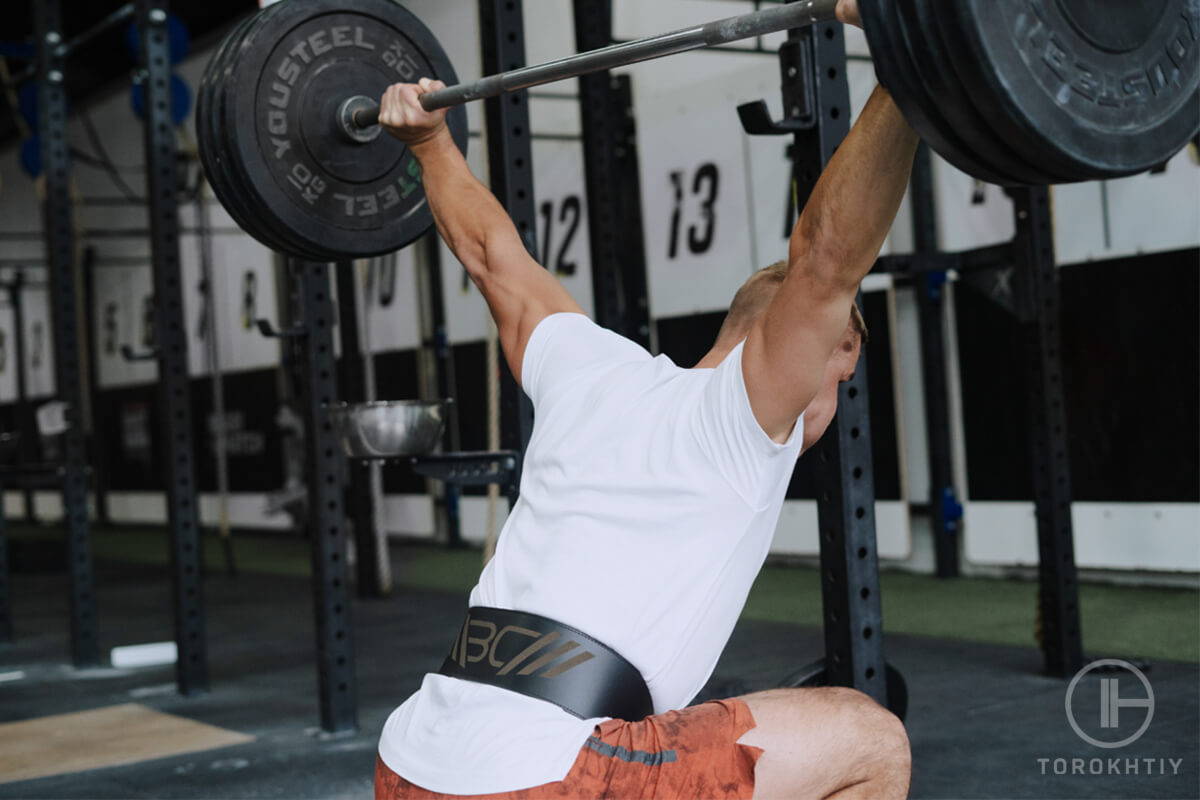
5. Stitching
Strong, reinforced stitching in the right places can substantially increase the longevity of your belt, regardless of its construction material. Better-quality belts have additional layers of stitching beyond the essential that holds the belt together, especially at common breaking points such as around the clasp. Furthermore, quality stitching uses a thicker thread material (for example, bonded nylon) and is spaced more closely, providing more resistance to wear and tear.
6. Durability
Durability will often come down to the quality of the materials and construction of the belt. Leather belts are naturally more durable than their nylon counterparts, but that’s not always the case. A quality nylon belt will still outlast a cheaply-made leather one. However, it’s equally as important to choose the right type of belt for your workout. Consider the exercises you’re going to do and the general weight requirements for your belt, then refer to our short review and check out the manufacturer’s specifications.
7. Versatility
The main factor in the versatility of your belt will be the material it’s made of. Leather is sturdy but also stiff and, while it can hold a lot of pressure, it can be more difficult to move in. Hence, we mostly use leather belts in heavy, static lifts (powerlifting and similar). On the other hand, nylon belts offer more flexibility and agility during movement, making them suitable for activities beyond weightlifting, particularly in cross-training sessions where you quickly switch between exercises.
Tips From the Champ
When choosing a lifting belt, consider the fastening system carefully. A sturdy metal buckle is cost-effective and durable, but slightly less comfortable and adjustable than a lever system. Lever belts may require pre-adjustments, but once fitted correctly, they feel incredibly secure. If customization and comfort are priorities, opt for a hook & loop Velcro strap, even though it's not as durable as the other options.
Olympic Weightlifting Champion
8. Price/Quality
Although it is generally true that higher-priced belts will be of better quality than more affordable ones, that isn’t always the case. Furthermore, not everyone needs to pay top dollar to get equipment that will be underutilized. For example, if you’re a beginner or casual lifter, spending hundreds of dollars on a premium leather, stainless steel buckle belt meant for substantial lifts is a waste of money. When curating these lists, our top picks usually boast the highest value for money.
9. Federation Certifications
This section is most important if you train with the purpose of entering weightlifting competitions in the future. We’ve already touched on the fact that belts are often made using standardized sizing to adhere to the rule set by competitive governing bodies, such as the International Powerlifting Federation (IPF), USA Powerlifting (USAPL), and others. Depending on the competition, these rules can be quite lax or rigorous.
For example, remember that the International Weightlifting Federation, which most notably governs the Olympic Games, has only one rule: the maximum width of the belt is 12 cm (roughly 4.72 inches). On the other hand, the IPF not only has strict rules on the sizing of the belt, but it also has a list of pre-approved equipment which can be used in their official events. In other words, even if your belt fits the correct measurements, it can still be denied by competition inspectors. If you’re looking for a belt to possibly use in future competitive endeavors, making sure it’s IPF-certified can save you some frustration and money.
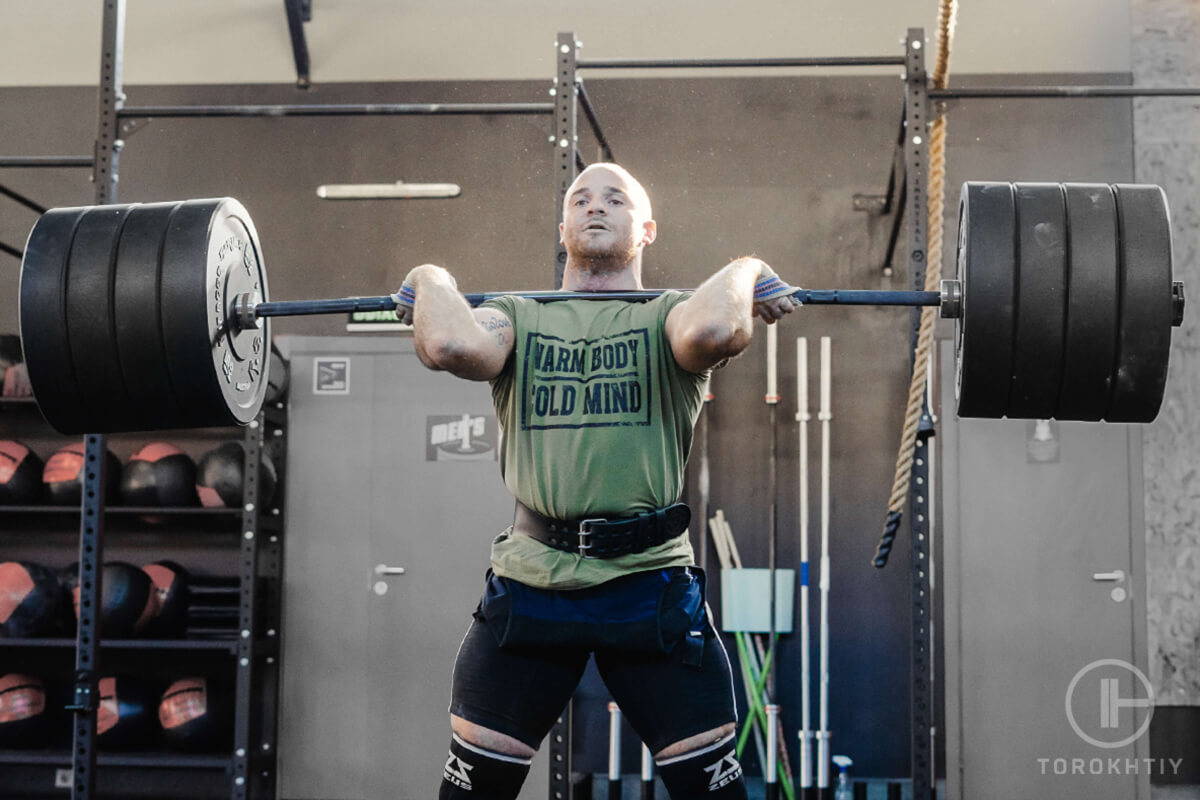
How to Use a Weightlifting Belt?
If you want to start wearing a weightlifting belt, it’s important to know how. Although it may seem logical and obvious, these are the key points to keep in mind:
1. Know Where to Place It
Even though it’s called a belt, it doesn’t actually go around your waist. In fact, a weightlifting belt is supposed to sit above your waist. It's supposed to go around your core, surrounding your abs, obliques, and lower back. Arguably the most important part to cover with your belt is the back, so in case it doesn’t fit ideally, make sure to adjust it in a way where it provides more support around your spine than your abs.
Jacek Szymanowski remarks:
"Two most common mistakes I see with belts: 1. It’s placed too low; 2. It’s too tight. Keep in mind that wearing your belt too low can actually have detrimental effects. 🙂"
2. Adjust the Fit
A common mistake beginners make is strapping the weightlifting belt too hard. This may seem logical given what it’s meant to do, but in reality, your weightlifting belt should fit tight, but not too tight. When your body is relaxed, you should be able to easily slip a couple of fingers in between the belt and your core. When fully braced, there should be no more space between the belt and your body. But even then it should just stop the muscles in their tracks and not actively push them back. Important tip: keep the belt tightest during exercises with a straight upper body (squat, overhead press) to provide maximal spinal support and avoid movement. For exercises that require bending in your upper body (deadlift, Olympic lifts, bench press), keep the belt slightly looser to avoid it digging into your body and compressing your core.
3. Brace Your Core
Most people imagine bracing your core as simply contracting your muscles. Although that is one step of it, it’s also important to know how to breathe to brace for your lift. Breathe in through the nose and into the diaphragm, which should result in expansion in your stomach and raising of your chest. Proper bracing is very important for any weightlifting exercise to not lose your breath, minimize muscle fatigue, avoid feeling uncomfortable/dizzy, etc.
Jacek Szymanowski's personal tip:
"If you have bracing problems wear a belt with all lifts but loose enough so you get sensory connection only when you brace properly — as a sort of tactile cue. Brace your core first and then get air in your belly, not the other way around. This will build the intra-abdominal pressure in your gut needed to protect your spine."
4. Readjust Between Each Set
If you’re going for multiple sets of the same exercise, it’s good practice to release the belt when cooling down, then readjust before the next exercise attempt. Having the belt on at all times can keep your muscles tense and restrict your breathing, which will hinder immediate exercise recovery and can build up to an injury on multiple set reps.
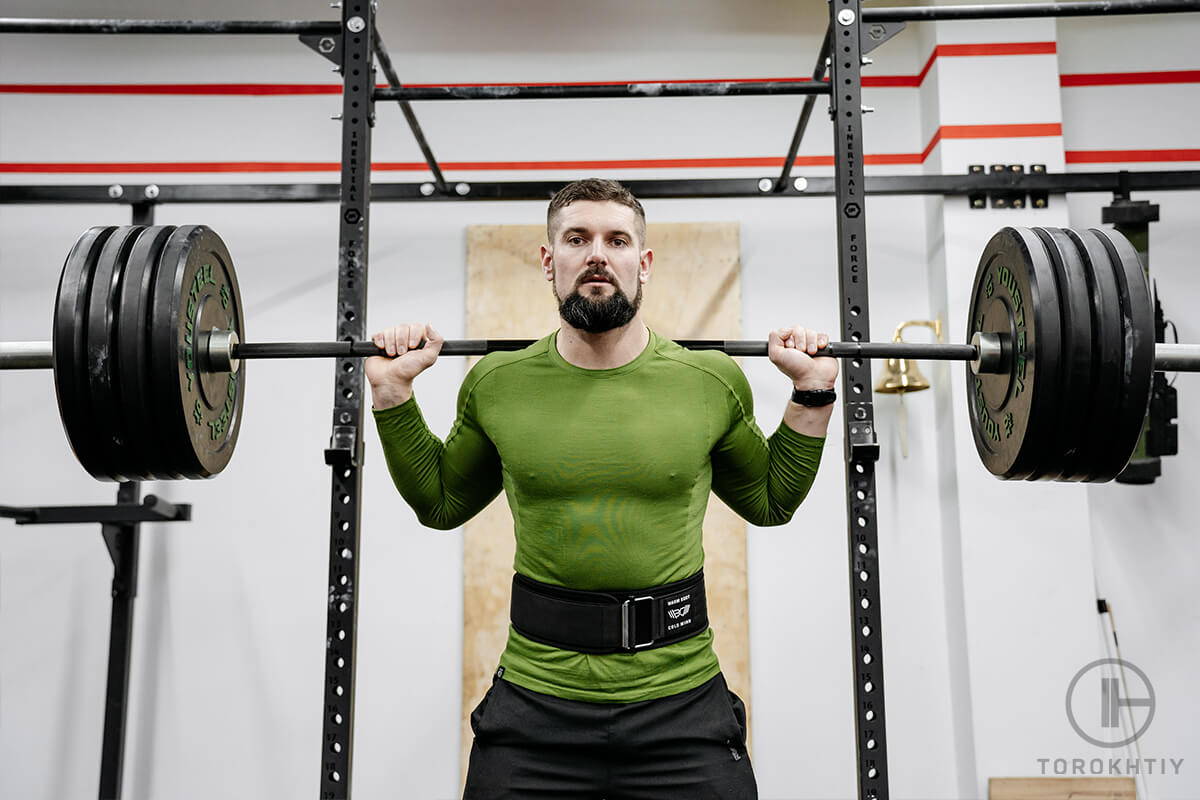
FAQ
What Kind of Belt Is Best for Deadlifting?
Deadlifts are a compound exercise that primarily targets your posterior chain, a major part of which is your core, in particular the erector spinae (large spinal muscles). With that in mind, the best type of belt to use for deadlifting would be one that stabilizes your spine to a higher degree. If you’re focusing on deadlifts as your main exercise and plan to do reps close to your maximum capacity, consider a Powerlifting belt made of leather. Most deadlifters prefer a belt that is thicker and wider at the back area.
What Belts Do Olympic Lifters Use?
Olympic lifters often opt for belts designed with a gradual taper, wider across the back and gradually narrowing toward the front. Typically, the back section measures around 4 inches in width, while the front tapers to approximately 2 inches. This design balances the need for substantial back support with a desire for comfortable movement in the front. The narrower front section allows for more mobility and lowers the chance of the barbell hitting the belt as it travels.
Does a Lifting Belt Help You Lift More?
A weightlifting belt won’t help you lift more weight upfront but it can improve other aspects of your lifting performance, such as comfort, speed, and confidence, which can indirectly result in lifting greater weight.
Is It Better to Lift With a Belt or No Belt?
Both methods have their pros and cons. Although it can be helpful, research suggests a weightlifting belt may be unnecessary before attempting personal maximums or higher repetitions. Novice and recreational lifters working with a lower weight capacity that they can easily manage can benefit from the raw spine strengthening of beltless lifting, while advanced lifters attempting heavy lifts will greatly benefit from wearing one.
Should I Get a 10 mm or 13 mm Lifting Belt?
For the majority of lifters, a 10 mm belt is more than sufficient. A 13mm belt is best suited for highly advanced lifters who lift 2-3 times their body weight in squats and deadlifts or those of a heavier weight category (120 kg/250 lbs or more).
Conclusion
This concludes our comprehensive lifting belts review. If you had questions or doubts about the power weightlifting belts, you've likely found the answers you needed. Utilizing a belt during heavy lifting enhances safety and performance, and enables you to push your limits. However, remember that selecting the best weightlifting belt for your needs is as crucial as wearing one.
Our top pick is the Leather Weightlifting Belt by Warm Body Cold Mind. It strikes the best balance between performance, aesthetics, and price, providing excellent value for money and making it an easy choice to recommend.
We’d love to hear from you as well. Tell us what your favorite weightlifting exercise is. Also, have you tried using a weightlifting belt before?
You can let us know by leaving a comment below and make sure to follow us on social media where we post lots of valuable fitness content.
Also read:
- Clusters Functional Fitness
- Harbinger Lifting Belt Review
- Nike Weightlifting Belt Reviews
- Military Vs Overhead Vs Shoulder Press
- Gymreapers Lever Belt Review
- How To Wear Weight Lifting Belt
References:
- “Ripstop”, wikipedia.com https://en.wikipedia.org/wiki/Ripstop (accessed August 21st 2023)
- Neoprene, wikipedia.com https://en.wikipedia.org/wiki/Neoprene (accessed August 21st 2023)
- “Effects of a belt on intra-abdominal pressure during weight lifting”, Harman EA, Rosenstein RM, Frykman PN, Nigro GA, Medicine & Science in Sports & Exercise (MSSE) 1989 Apr;21(2):186-90. https://pubmed.ncbi.nlm.nih.gov/2709981/ (accessed August 21st 2023)
- “Core Muscles” - Physiopedia.com https://www.physio-pedia.com/Core_Muscles. (accessed August 21st 2023)
- “Muscle activity during lifting: examining the effect of core conditioning of multifidus and transversus abdominis”, MacKenzie JF, Grimshaw PN, Jones CD, Thoirs K, Petkov J., Work. 2014;47(4):453-62. doi: 10.3233/WOR-131706. https://pubmed.ncbi.nlm.nih.gov/24004762/ (accessed August 21st 2023)
- “The effectiveness of weight-belts during the squat exercise”, Lander JE, Simonton RL, Giacobbe JK., Medicine & Science in Sports & Exercise 1990 Feb;22(1):117-26 https://pubmed.ncbi.nlm.nih.gov/2304406/ (accessed August 21st 2023)
- “The effectiveness of weight-belts during multiple repetitions of the squat exercise”, Lander JE, Hundley JR, Simonton RL., Medicine & Science in Sports & Exercise 1992 May;24(5):603-9 https://pubmed.ncbi.nlm.nih.gov/1533266/ (accessed August 21st 2023)
- “The effects of a weight belt on trunk and leg muscle activity and joint kinematics during the squat exercise”, Zink AJ, Whiting WC, Vincent WJ, McLaine AJ, The Journal of Strength & Conditioning Research 2001 May;15(2):235-40 https://pubmed.ncbi.nlm.nih.gov/11710410/ (accessed August 21st 2023)
- “Prevalence and Consequences of Injuries in Powerlifting: A Cross-sectional Study”, Strömbäck E, Aasa U, Gilenstam K, Berglund L., Orthopaedic Journal of Sports Medicine. 2018;6(5). https://journals.sagepub.com/doi/10.1177/2325967118771016 (accessed August 21st 2023)
- “Lumbar Spine”, my.clevelandclinic.org https://my.clevelandclinic.org/health/articles/22396-lumbar-spine (accessed August 21st 2023)
- “Effects of a lifting belt on spine moments and muscle recruitments after unexpected sudden loading”, Lavender SA, Shakeel K, Andersson GB, Thomas JS, Spine (Phila Pa 1976). 2000 Jun 15;25(12):1569-78 https://pubmed.ncbi.nlm.nih.gov/10851108/ (accessed August 21st 2023)
- “The influence of weightlifting belts and wrist straps on deadlift kinematics, time to complete a deadlift and rating of perceived exertion in male recreational weightlifters
- An observational study”, Fong, Shirley S.M. PT, PhDa,b,∗; Chung, Louisa M.Y. RNutr, DHSca; Gao, Yang MD, PhDc; Lee, Jeff Chak Wai BHEa; Chang, Tak Ching BHEa; Ma, Ada W.W. PhDa, Medicine 101(7):p e28918, February 18, 2022 https://journals.lww.com/md-journal/fulltext/2022/02180 /the_influence_of_weightlifting _belts_and_wrist.57.aspx (accessed August 21st 2023)
- “Rated Perceived Exertion (RPE) Scale”, my.clevelandclinic.org https://my.clevelandclinic.org/health/articles/17450-rated-perceived-exertion-rpe-scale (accessed August 21st 2023)
- “Weight lifting belt use patterns among a population of health club members.”, Finnie SB, Wheeldon TJ, Hensrud DD, Dahm DL, Smith J., The Journal of Strength & Conditioning Research 2003 Aug;17(3):498-502. https://pubmed.ncbi.nlm.nih.gov/12930176/ (accessed August 21st 2023)
- “Technical Rules Book 2023”, powerlifting.sport https://www.powerlifting.sport/fileadmin/ipf/data/rules/technical-rules/english/IPF_Technical_Rules_Book_2023__1_.pdf (accessed August 21st 2023)
- “Weightlifting in Olympics: Everything you need to know”, olympics.com https://olympics.com/en/news/weightlifting-olympics-rules-history-snatch-clean-and-jerk (accessed August 21st 2023)
- “2020 Technical & Competition Rules & Regulations”, iwf.sport https://iwf.sport/wp-content/uploads/downloads/2020/01/IWF_TCRR_2020.pdf (accessed August 21st 2023)
- “Approved list of Personal apparel and equipment for use at IPF sanctioned competitions”, powerlifting.sport https://www.powerlifting.sport /fileadmin/ipf/data/rules /approved-list/Approved__ List_2023-2026_ Final31-10-22-01.pdf (accessed August 21st 2023)
- “Electromyographic activity in deadlift exercise and its variants. A systematic review.” Martín-Fuentes I, Oliva-Lozano JM, Muyor JM, PLoS One. 2020 Feb 27;15(2):e0229507 https://www.ncbi.nlm.nih.gov/pmc/articles/PMC7046193/ (accessed August 21st 2023)
Why Trust Us?
With over 20 years in Olympic Weightlifting, our team does its best to provide the audience with ultimate support and meet the needs and requirements of advanced athletes and professional lifters, as well as people who strive to open new opportunities and develop their physical capabilities with us.
All products we select are primarily approved and tested by the Olympic Weightlifting Champion Oleksii Torokhtiy. Under his guidance, we provide honest and reasonable assessments of the products we review by checking their characteristics, packaging, design, comfort and durability features, and general product rating. We select products from only high-quality and trusted sports brands, thus vouching for their quality.
The product testing process is described in more detail here
Author: Oleksiy Torokhtiy
Olympic Weightlifting Champion
Best Results: Snatch – 200 kg,
C&J – 240 kg
Oleksiy Torokhtiy is a professional athlete boasting 20 years of experience in Olympic weightlifting. With multiple European and World titles under his belt, he has showcased his prowess in two Olympic Games (Beijing 2008 and London 2012). Upon concluding his illustrious career, Oleksiy dedicated himself to coaching. By 2022, he had conducted over 200 weightlifting seminars worldwide. He is the visionary behind an international sportswear and accessories brand known for its motto, “Warm Body Cold Mind.” Additionally, he is an esteemed author and the creator of a series of training programs and eBooks.
Reviewed by: Sergii Putsov
Head of Sport Science, PhD
Best Results: Snatch – 165 kg,
C&J – 200 kg
Sergii Putsov, Ph.D., is a former professional weightlifter and National team member, achieving multiple medals in the 94 kg weight category at national competitions. With a Master’s degree in “Olympic & Professional Sport Training” and a Sport Science Ph.D. from the International Olympic Academy, Greece, Sergii now leads as the Head of Sport Science. He specializes in designing training programs, writing insightful blog articles, providing live commentary at international weightlifting events, and conducting educational seminars worldwide alongside Olympic weightlifting expert Oleksiy Torokhtiy.
If you have any questions/suggestions/any other inquiries considering product reviews, you can reach out to us via email – [email protected]

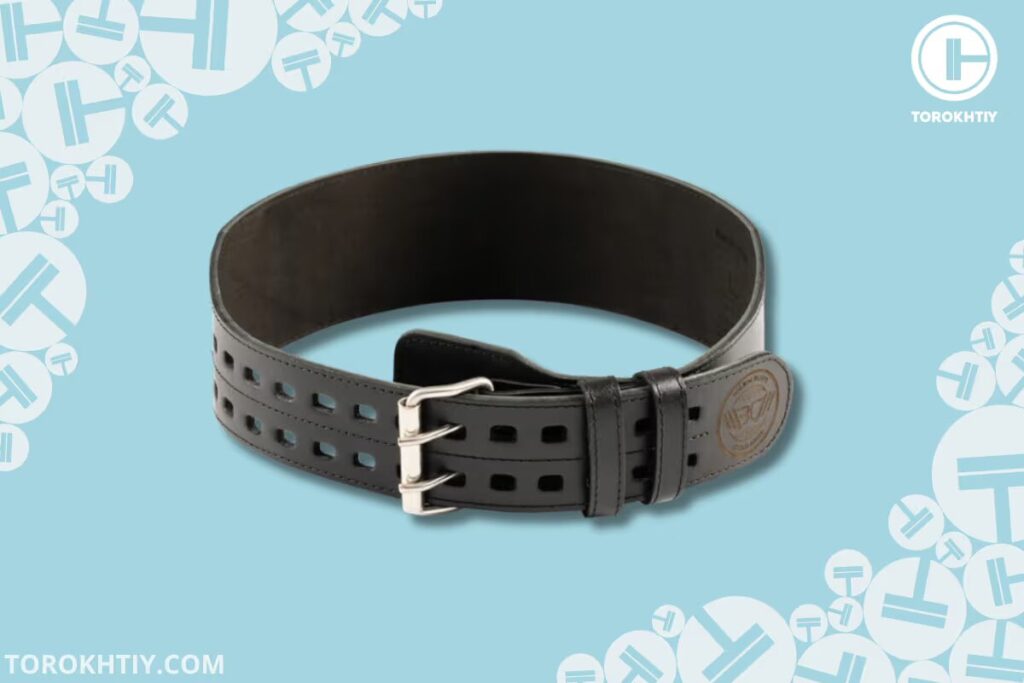
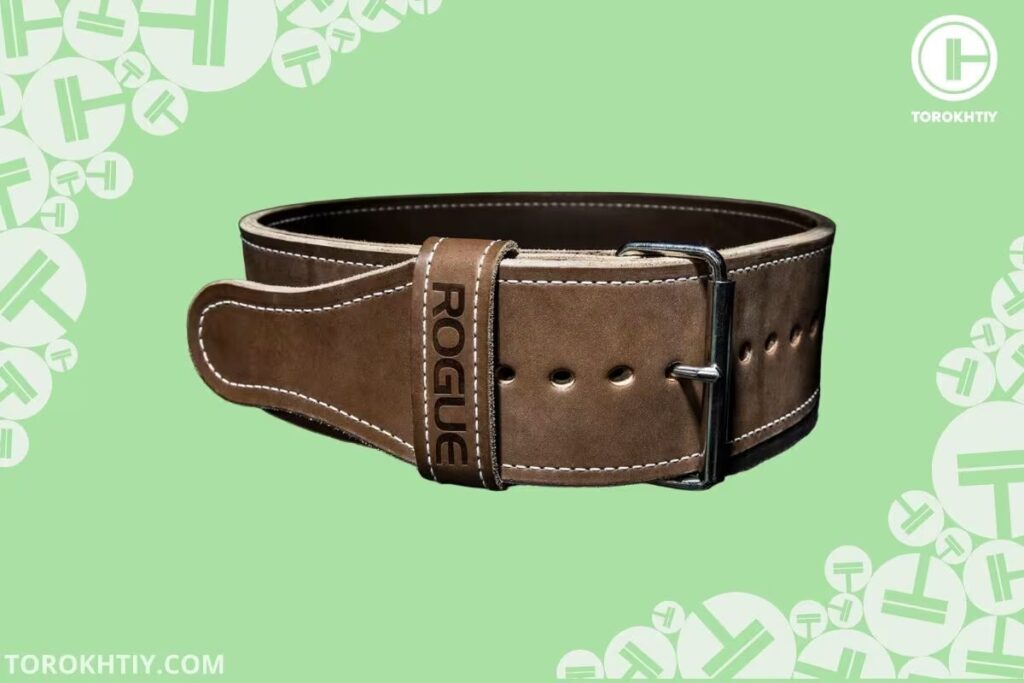
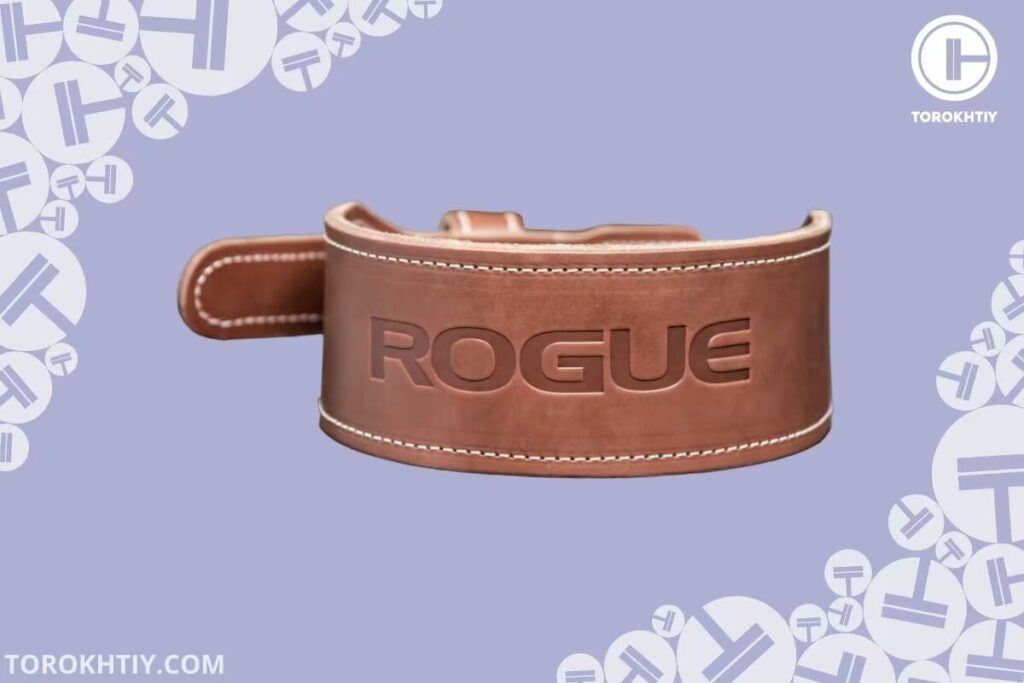
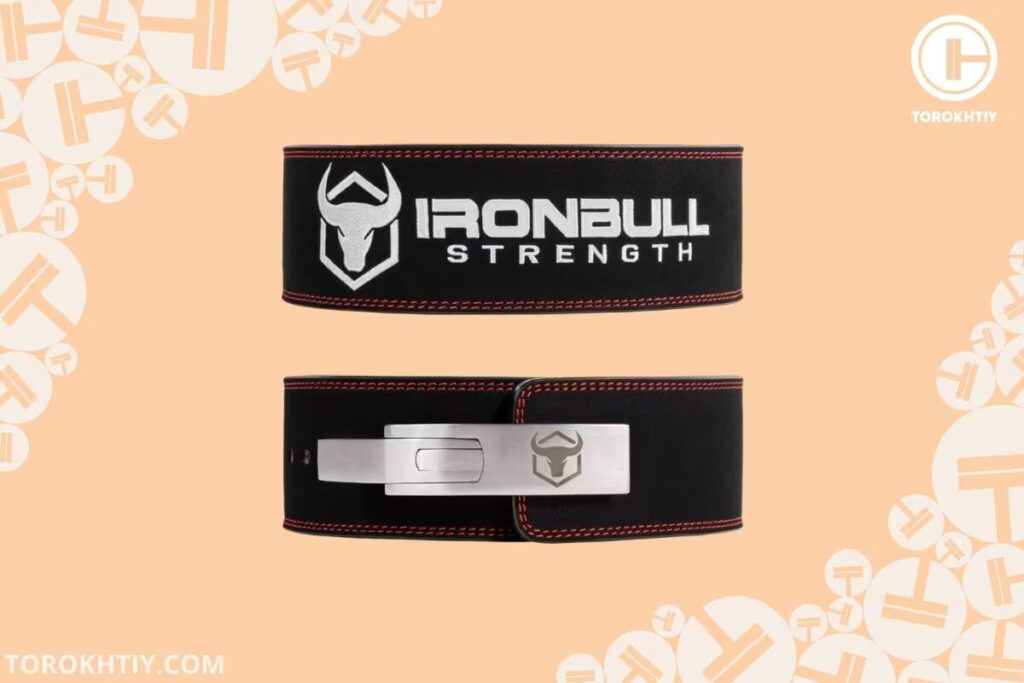
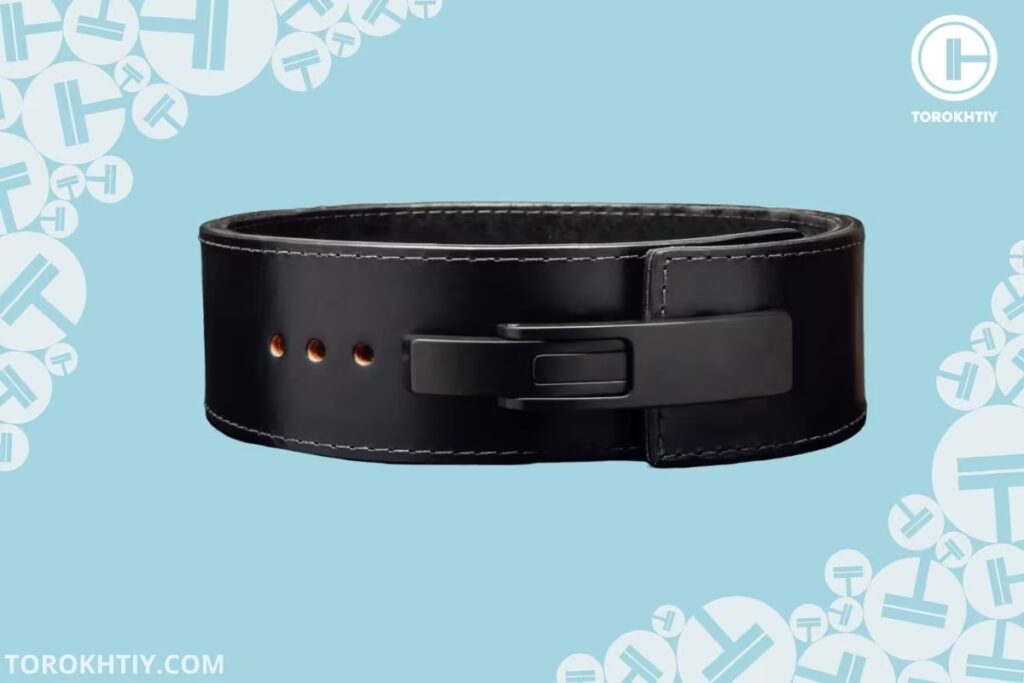
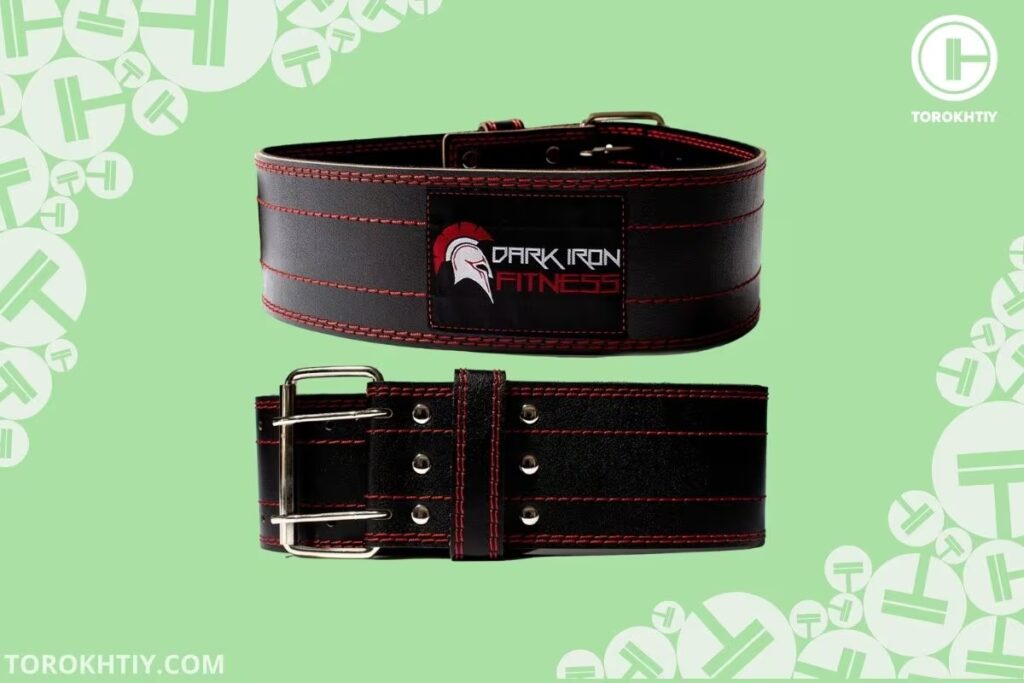
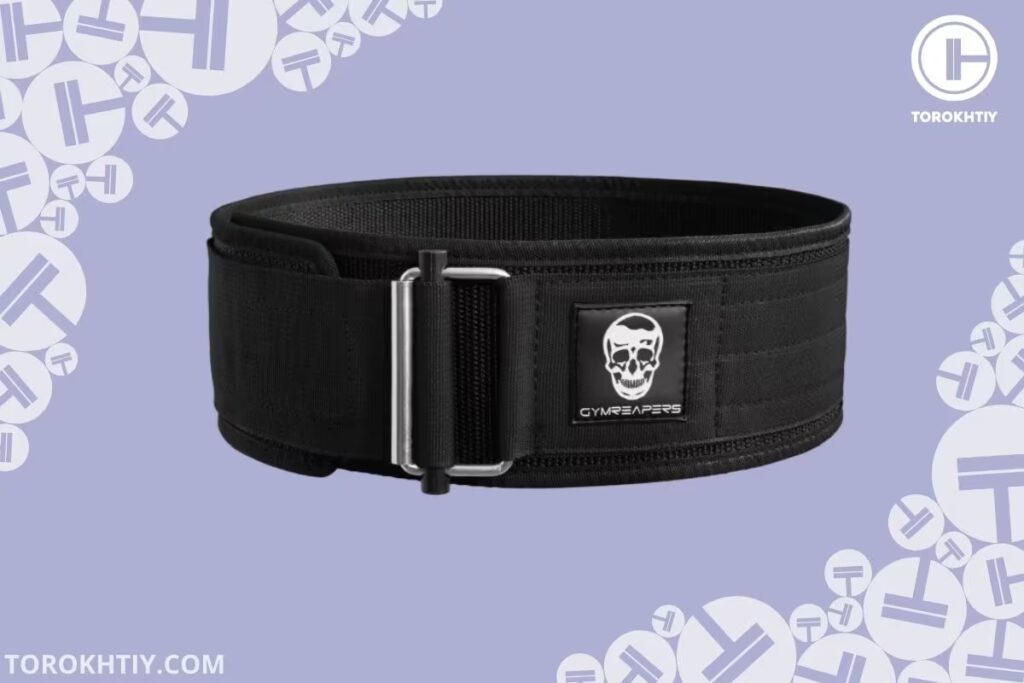
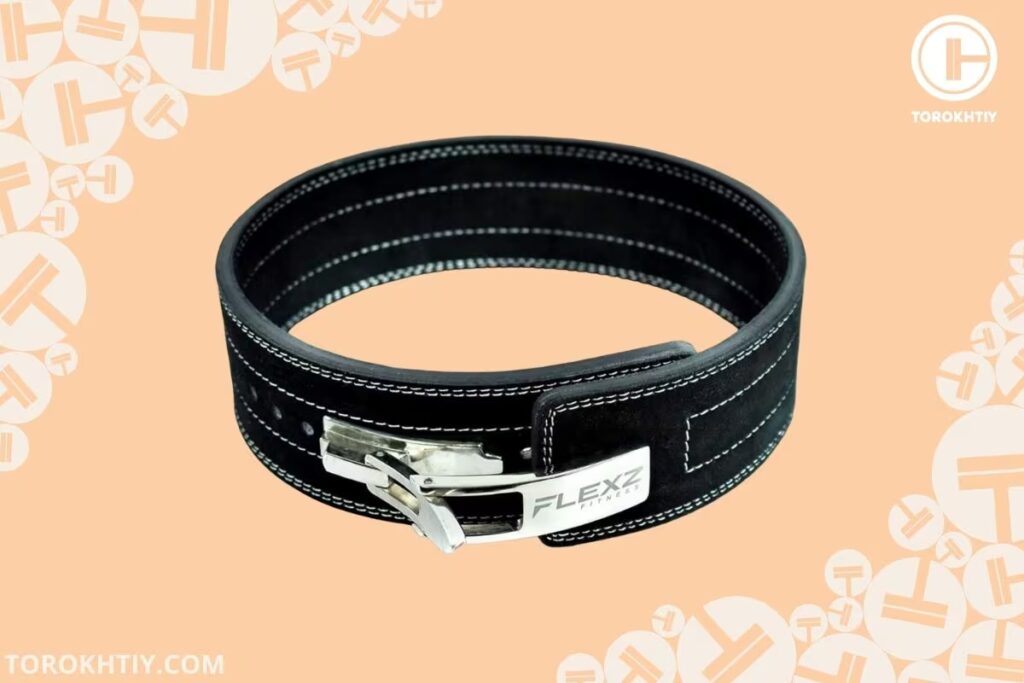
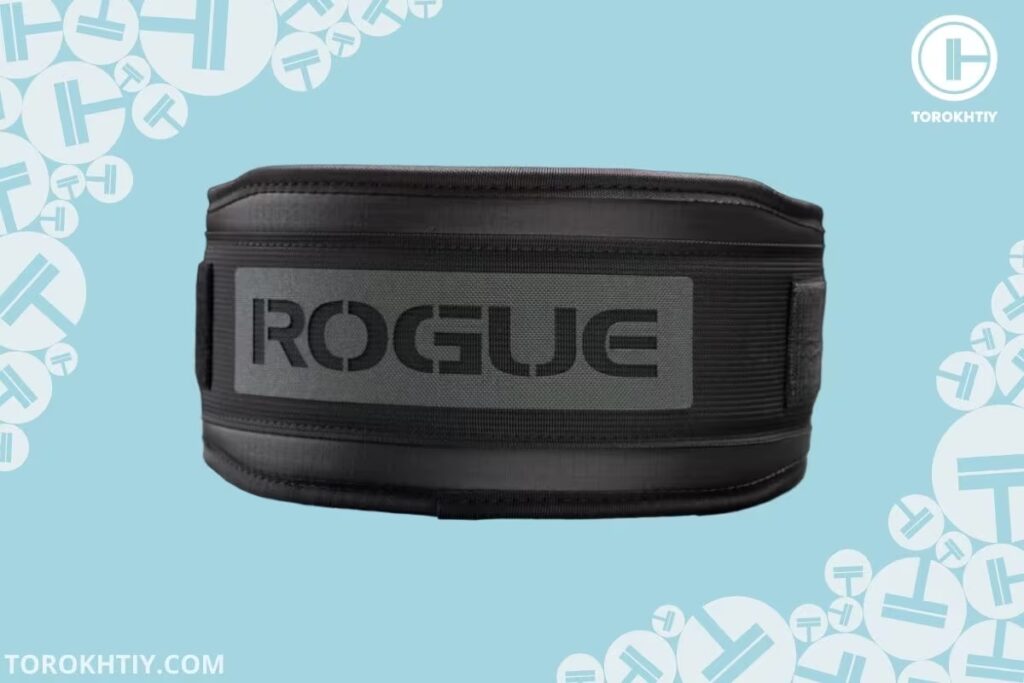
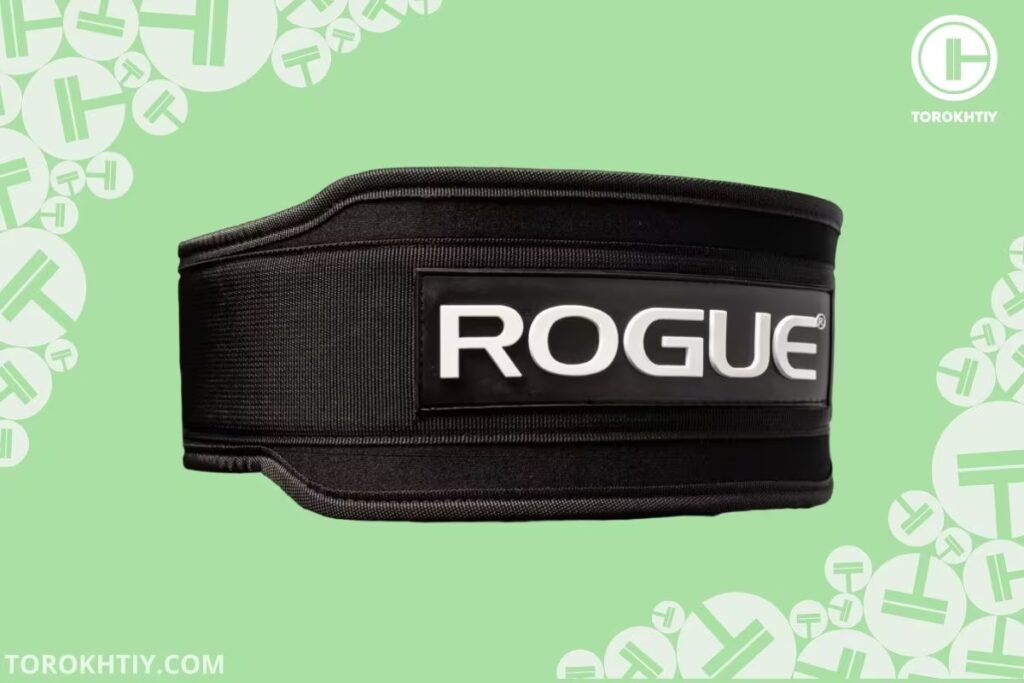
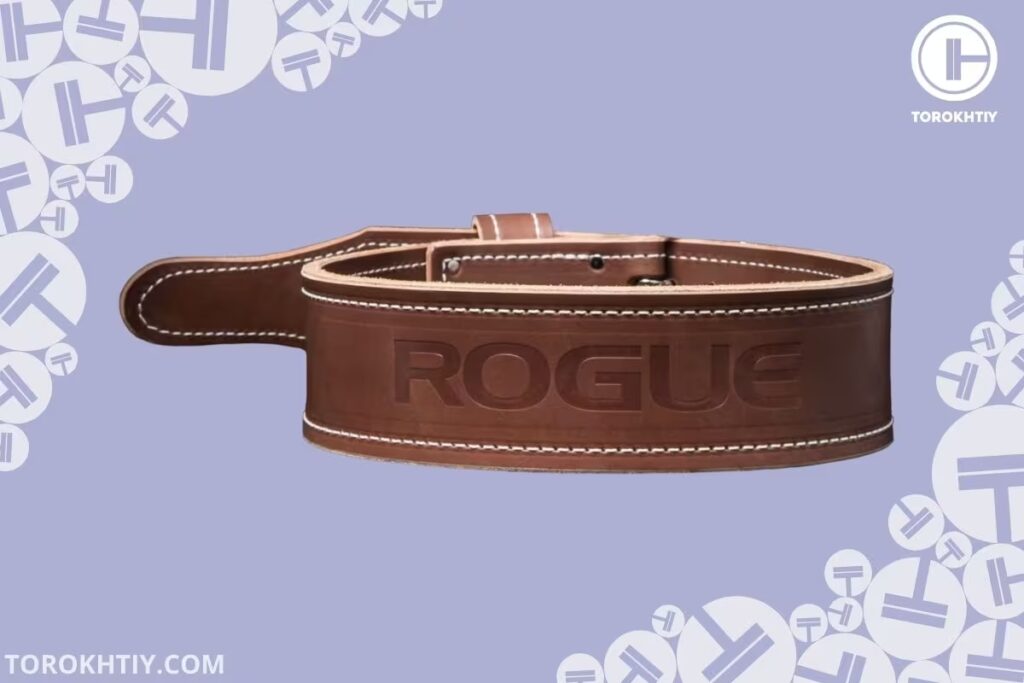
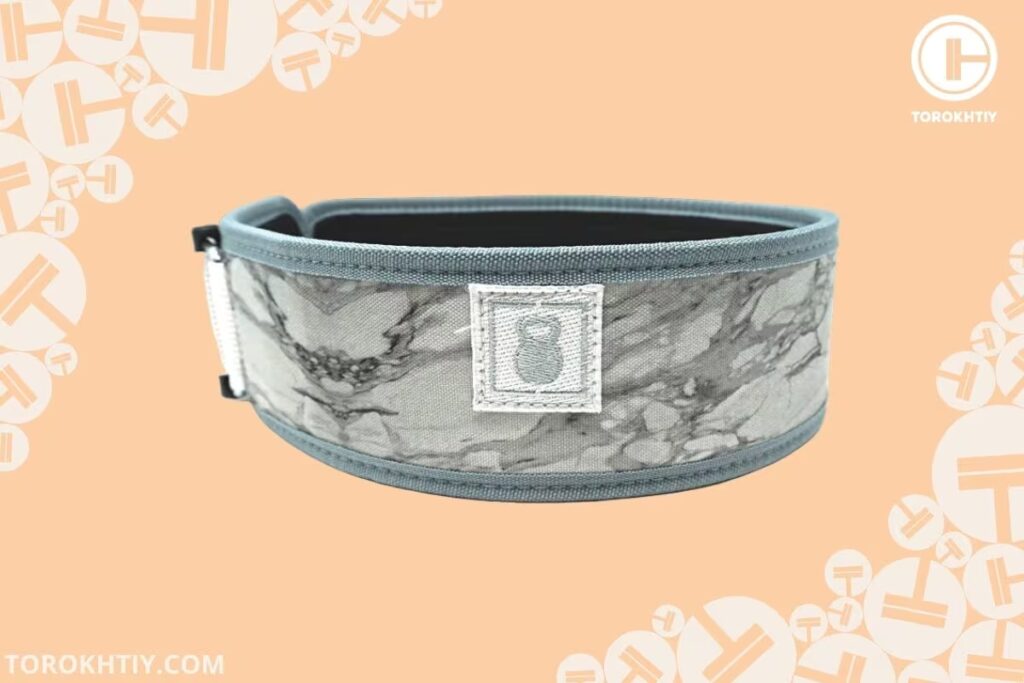
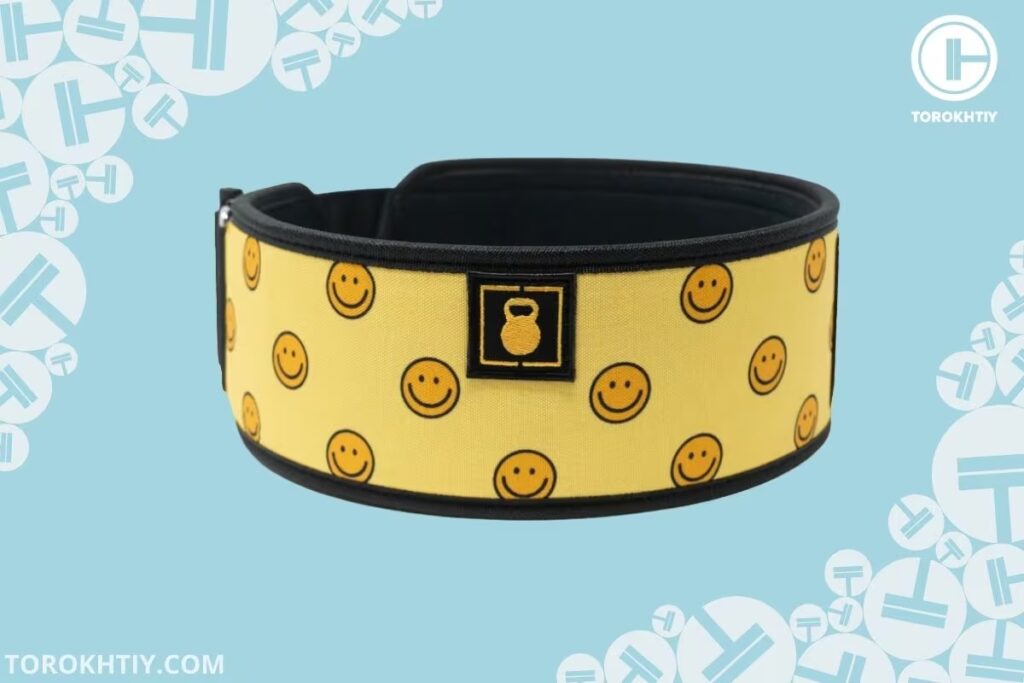
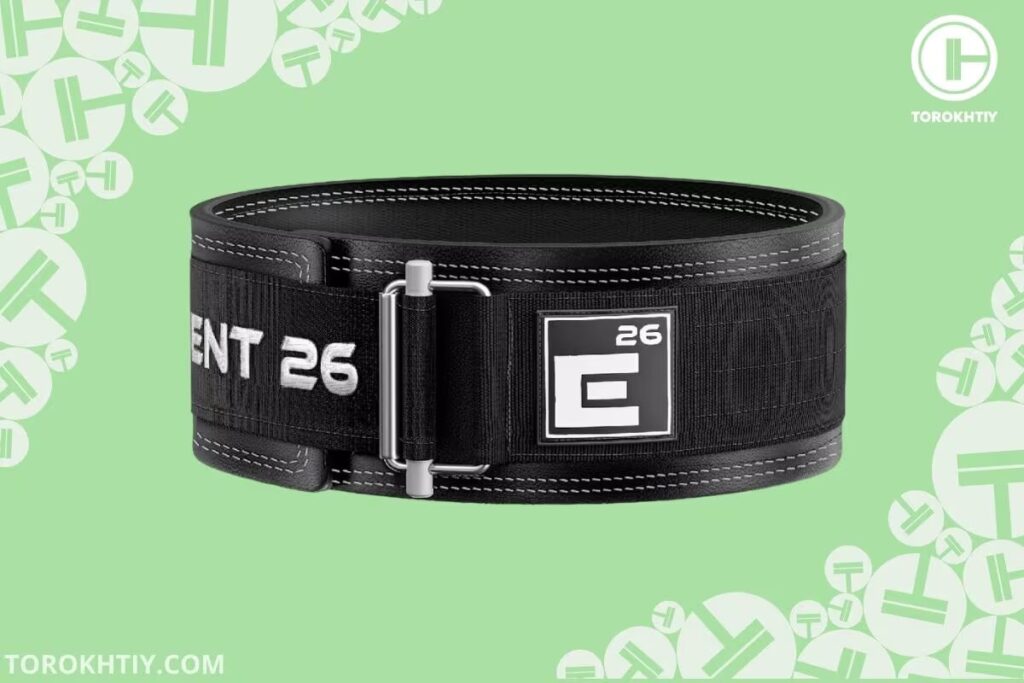
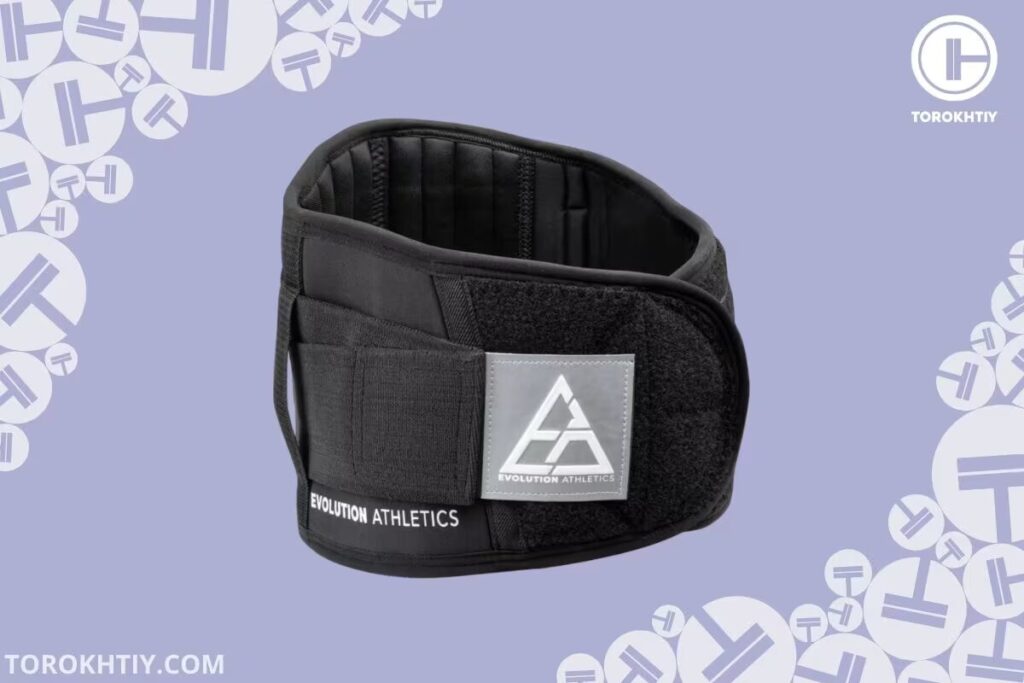



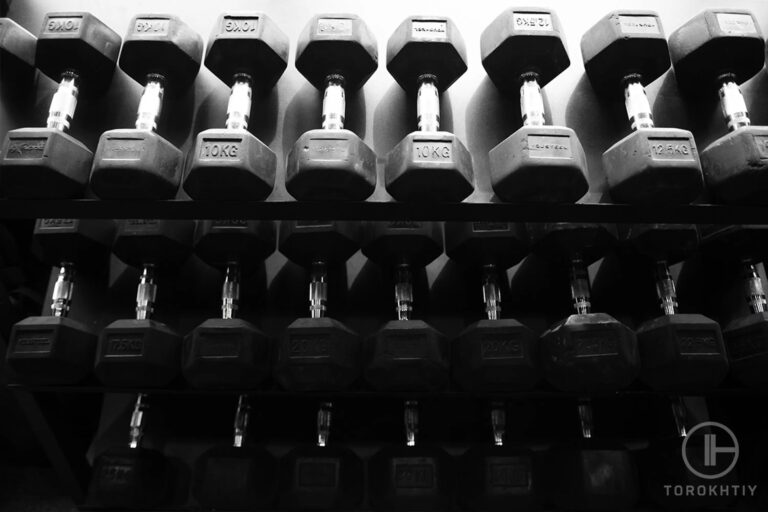
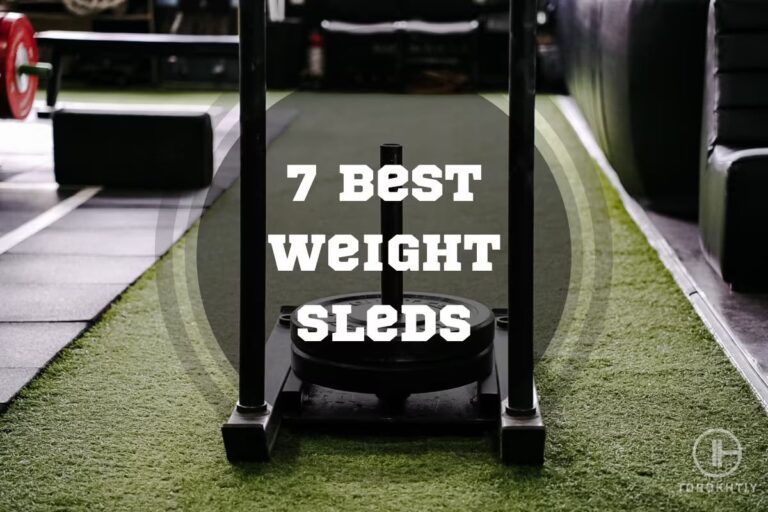

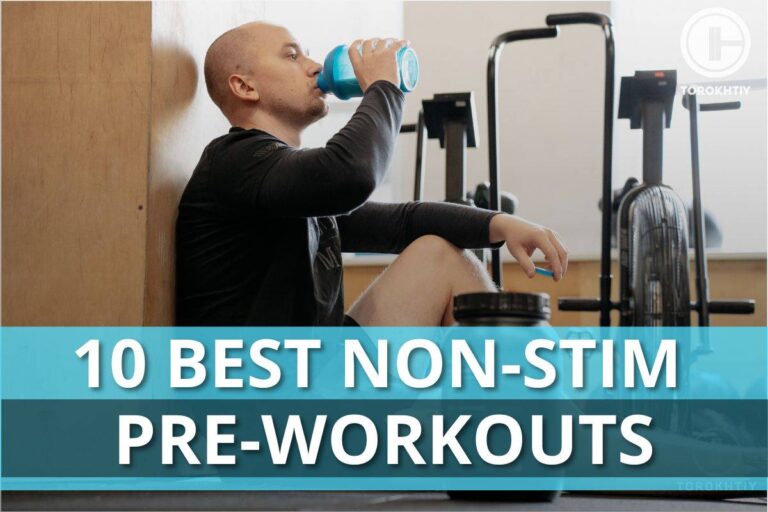
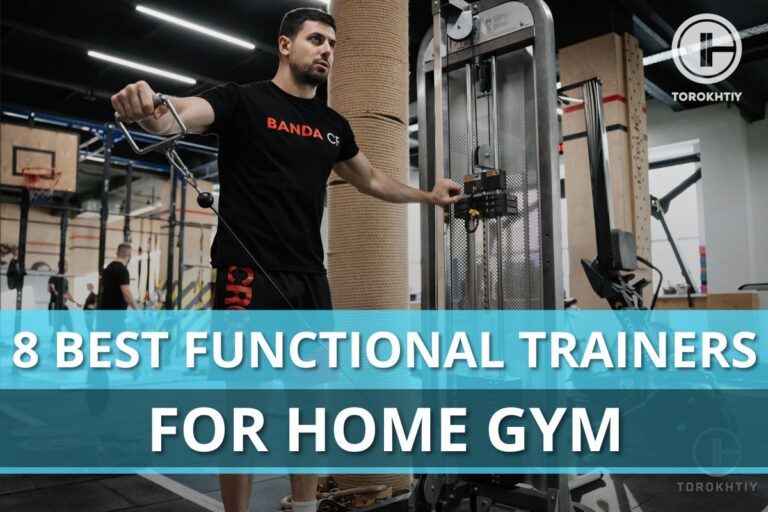
![24 Home Gym Ideas On A Budget in [Year]](https://torwod.com/wp-content/uploads/2024/02/home-gym-ideas-torokhtiy-768x512.jpg)